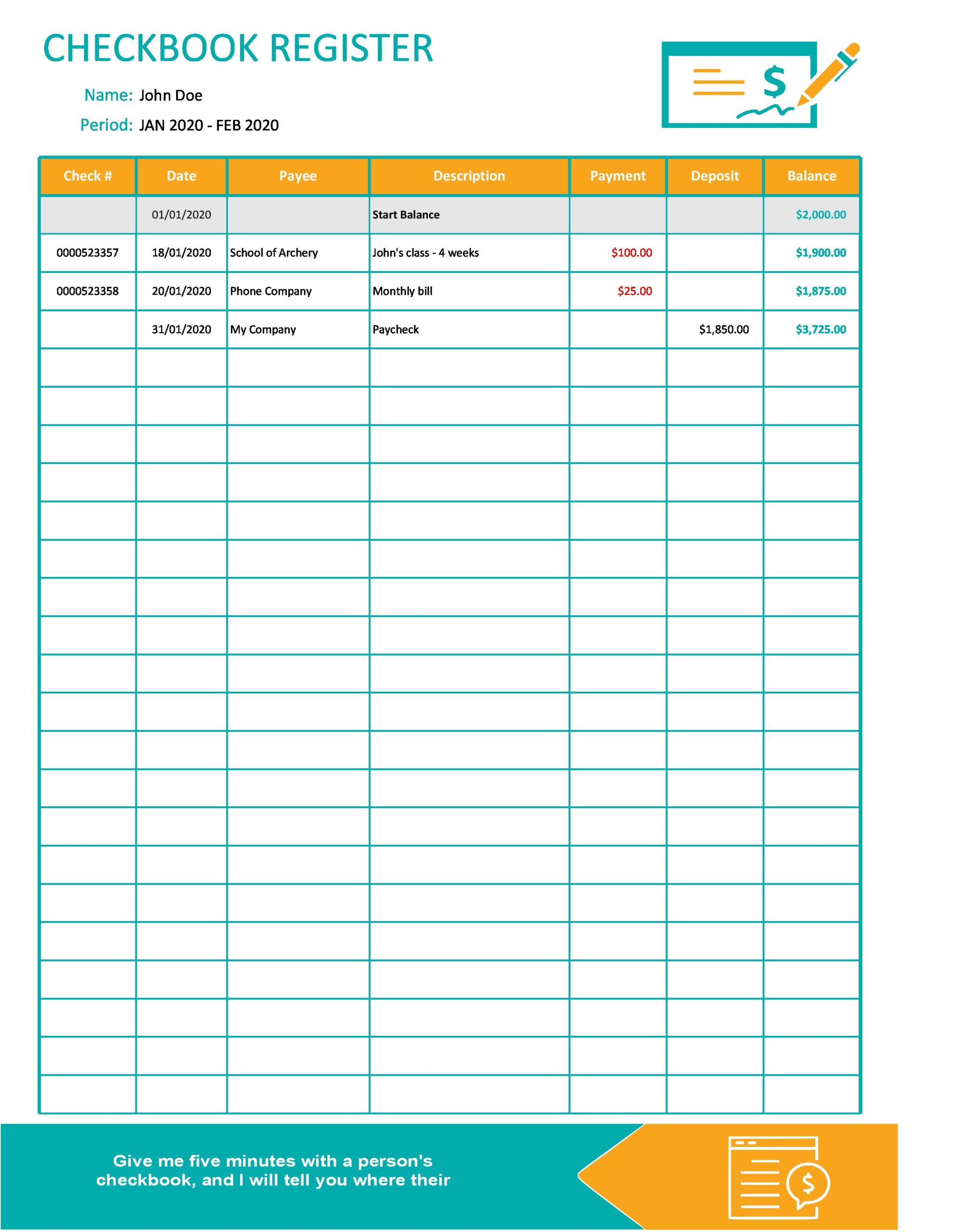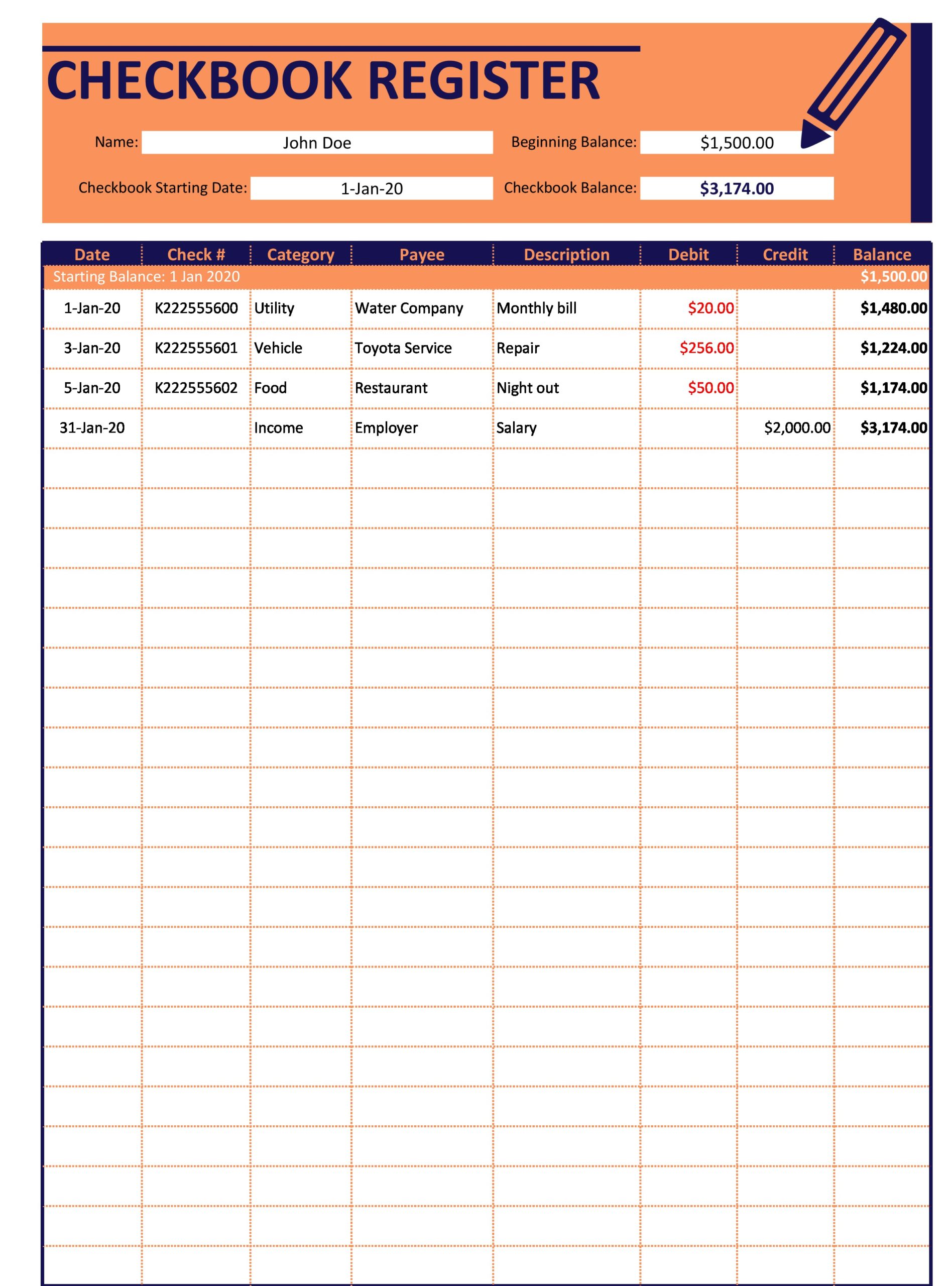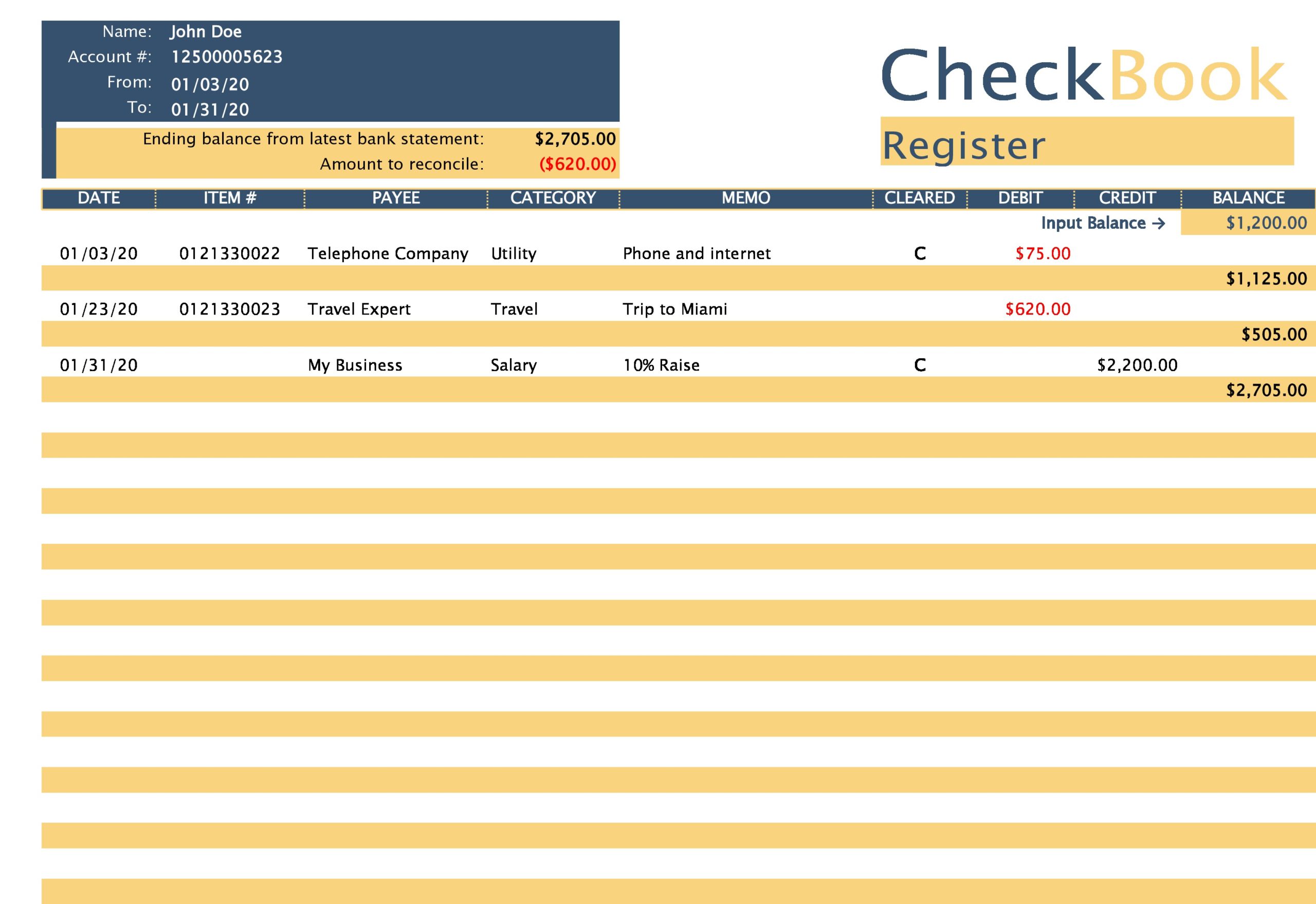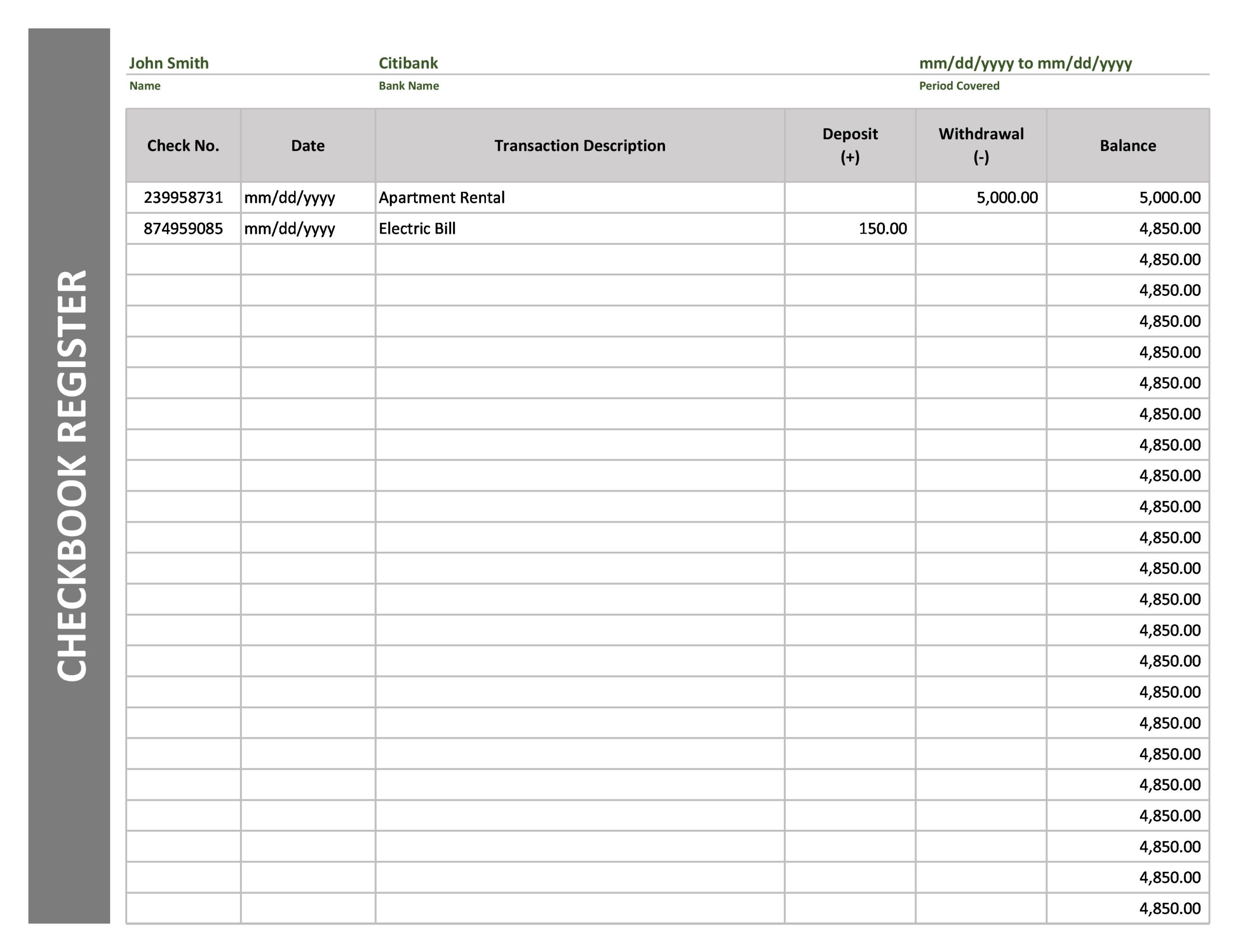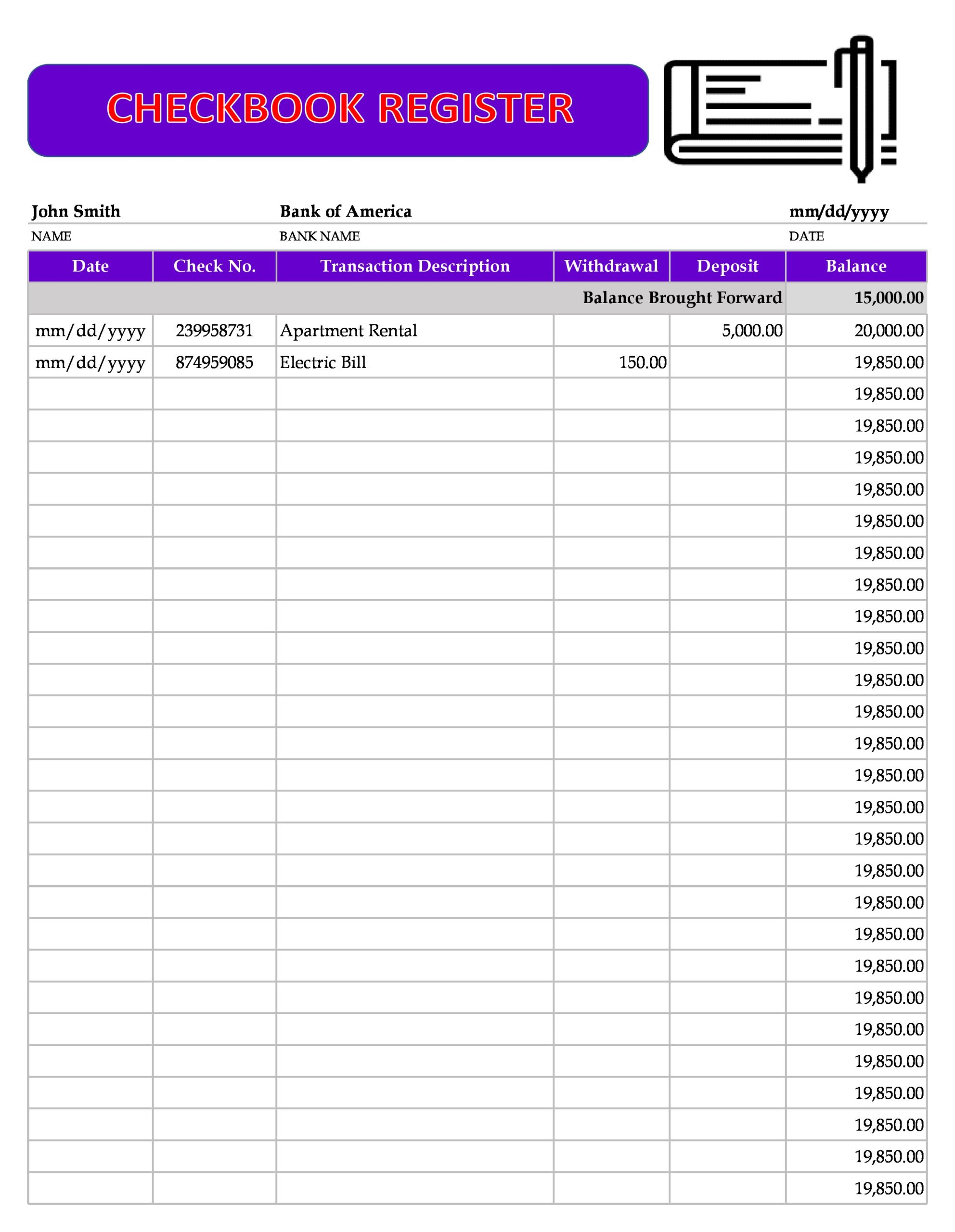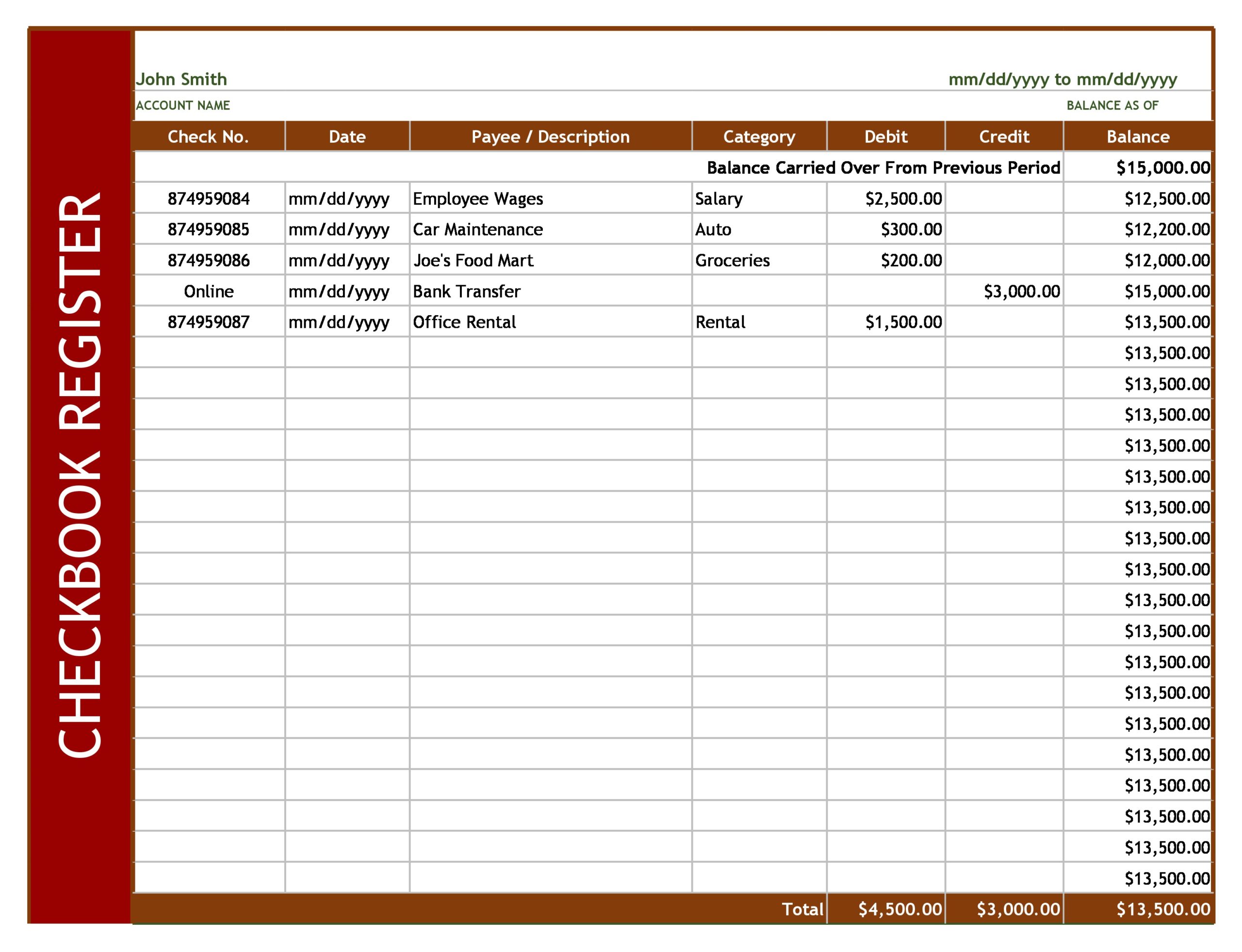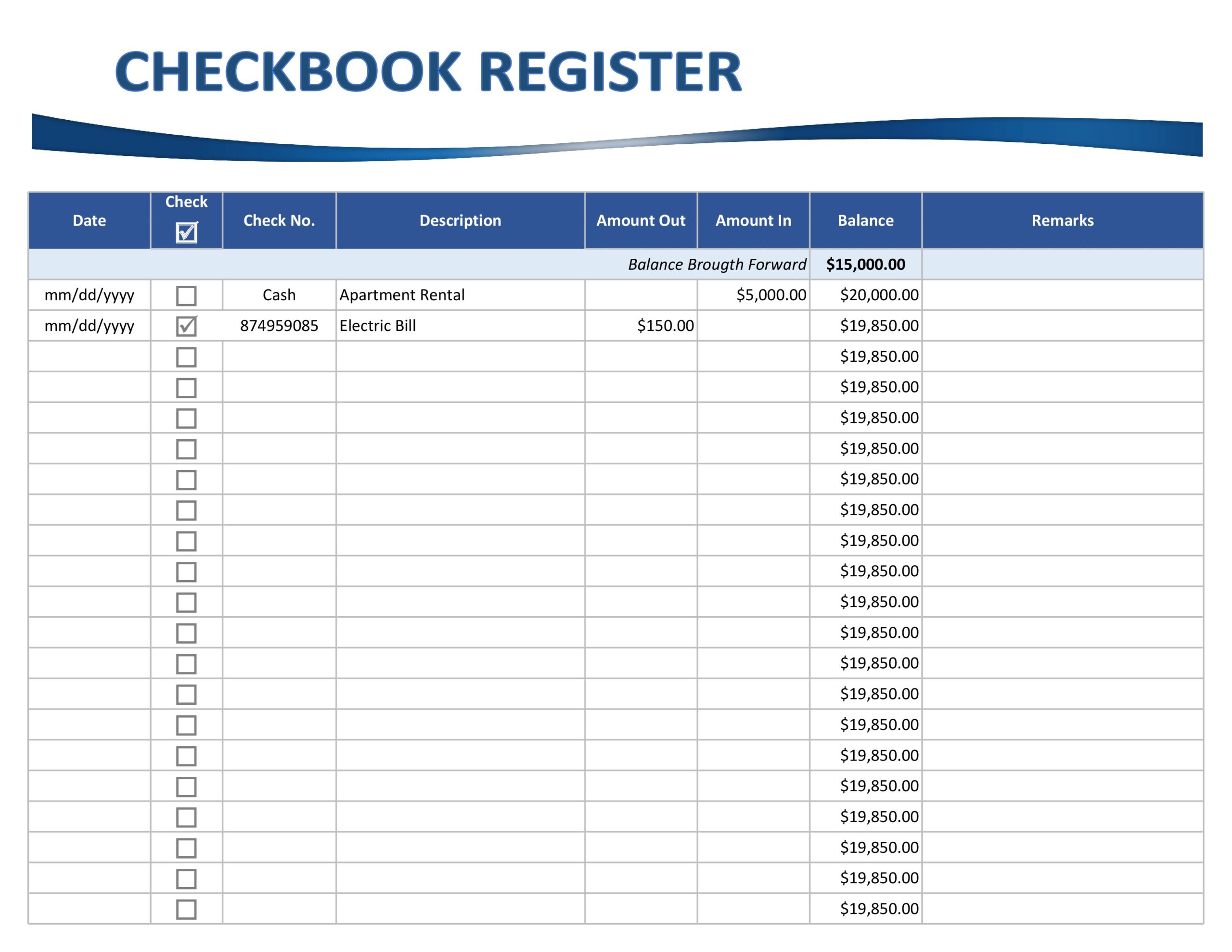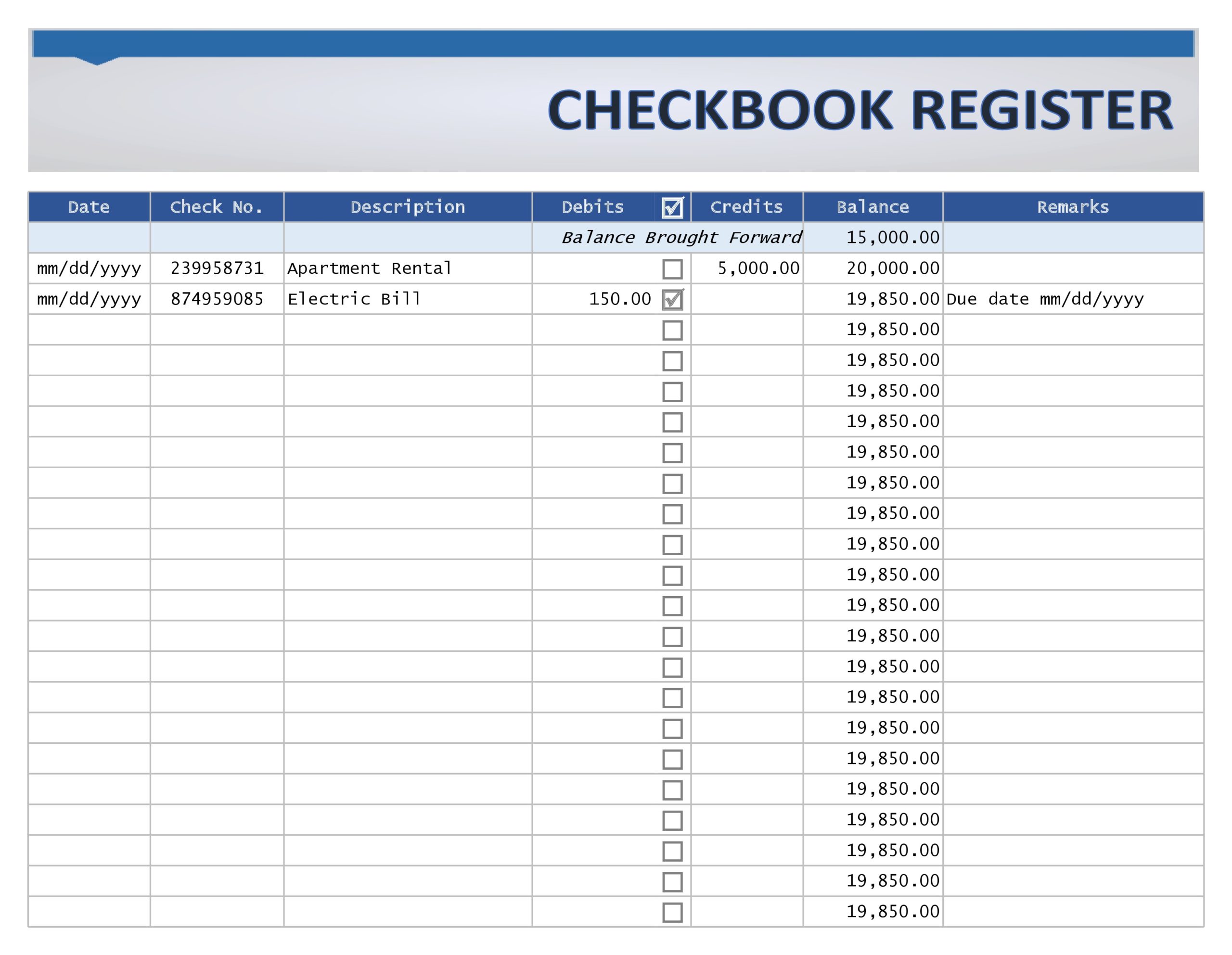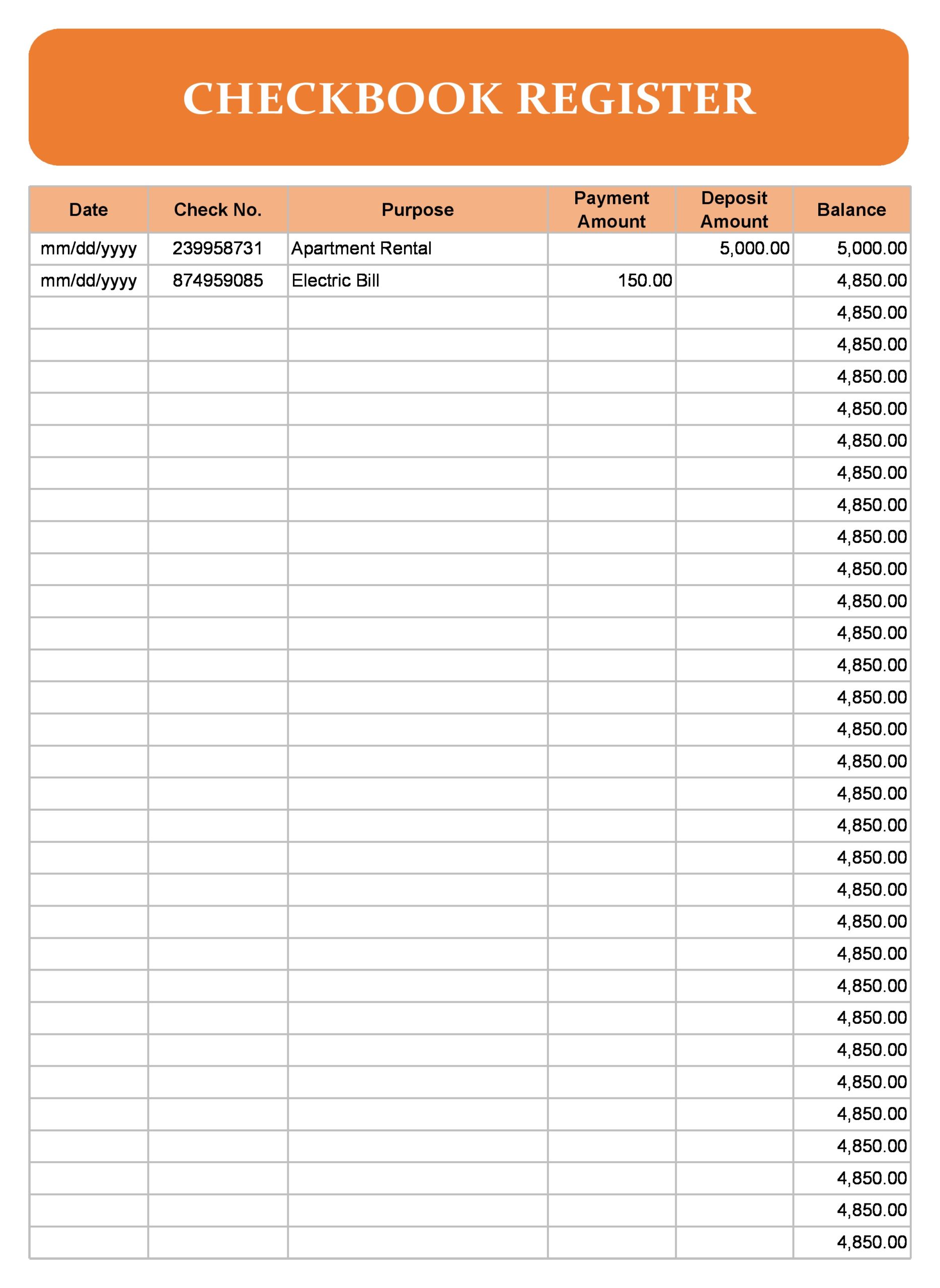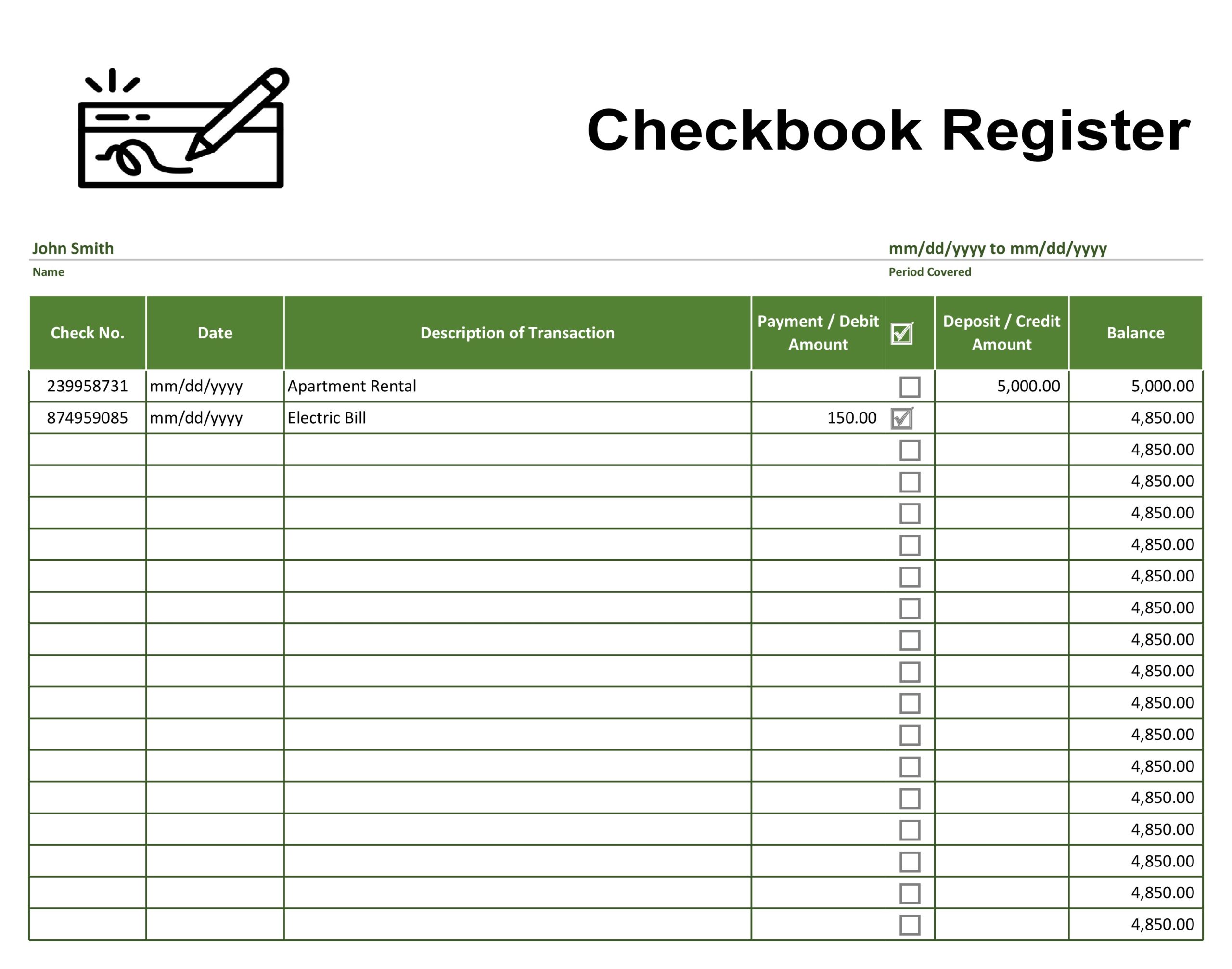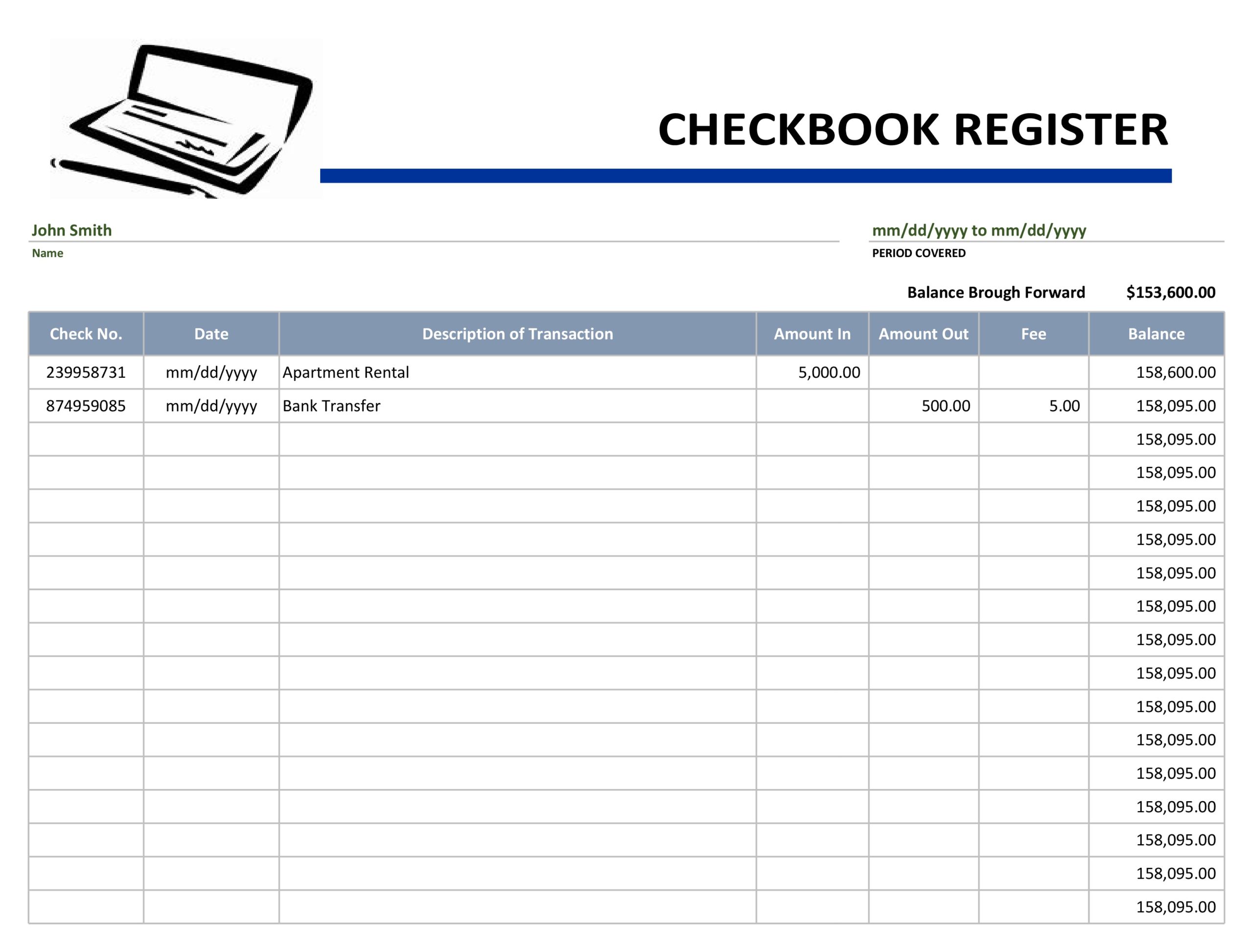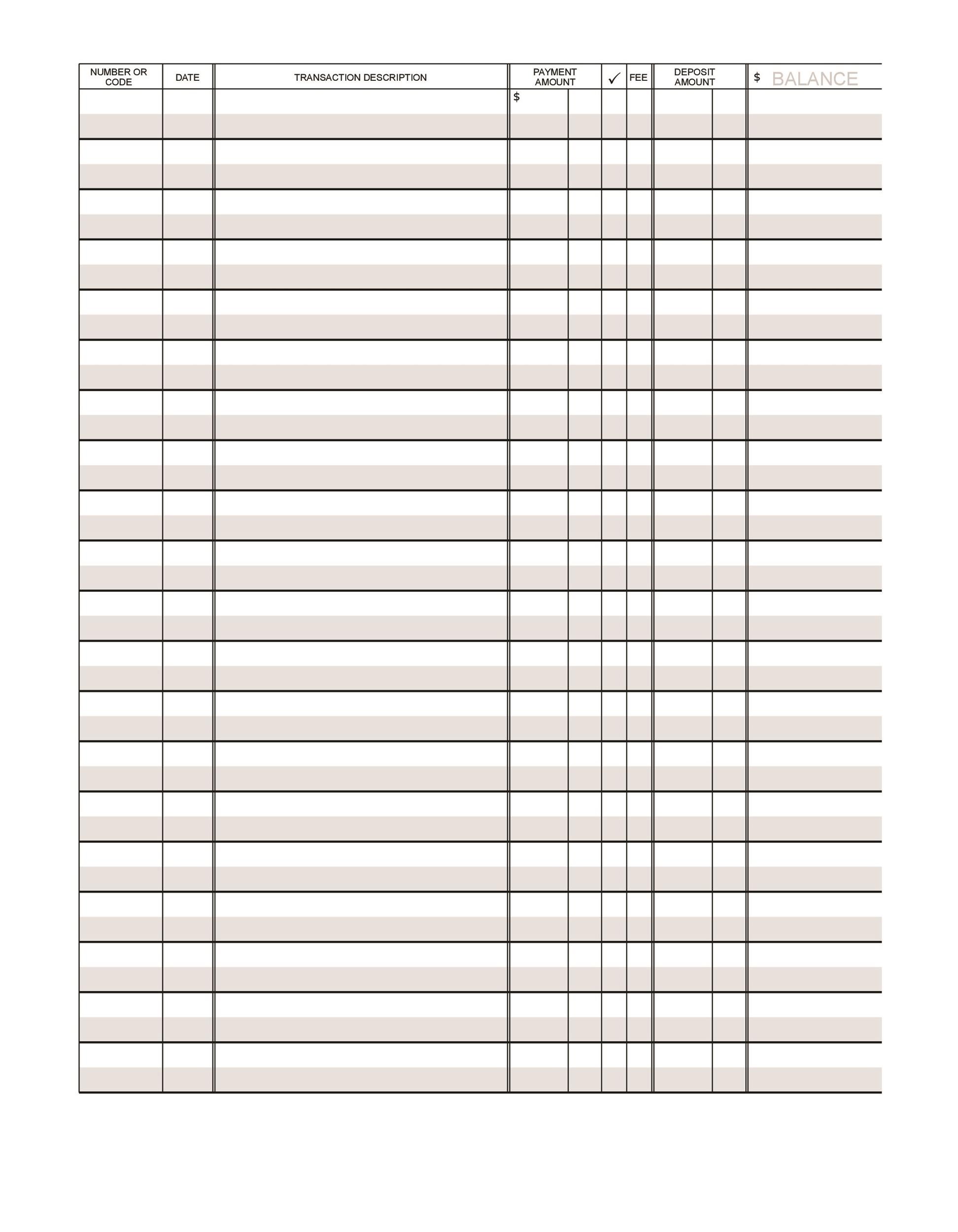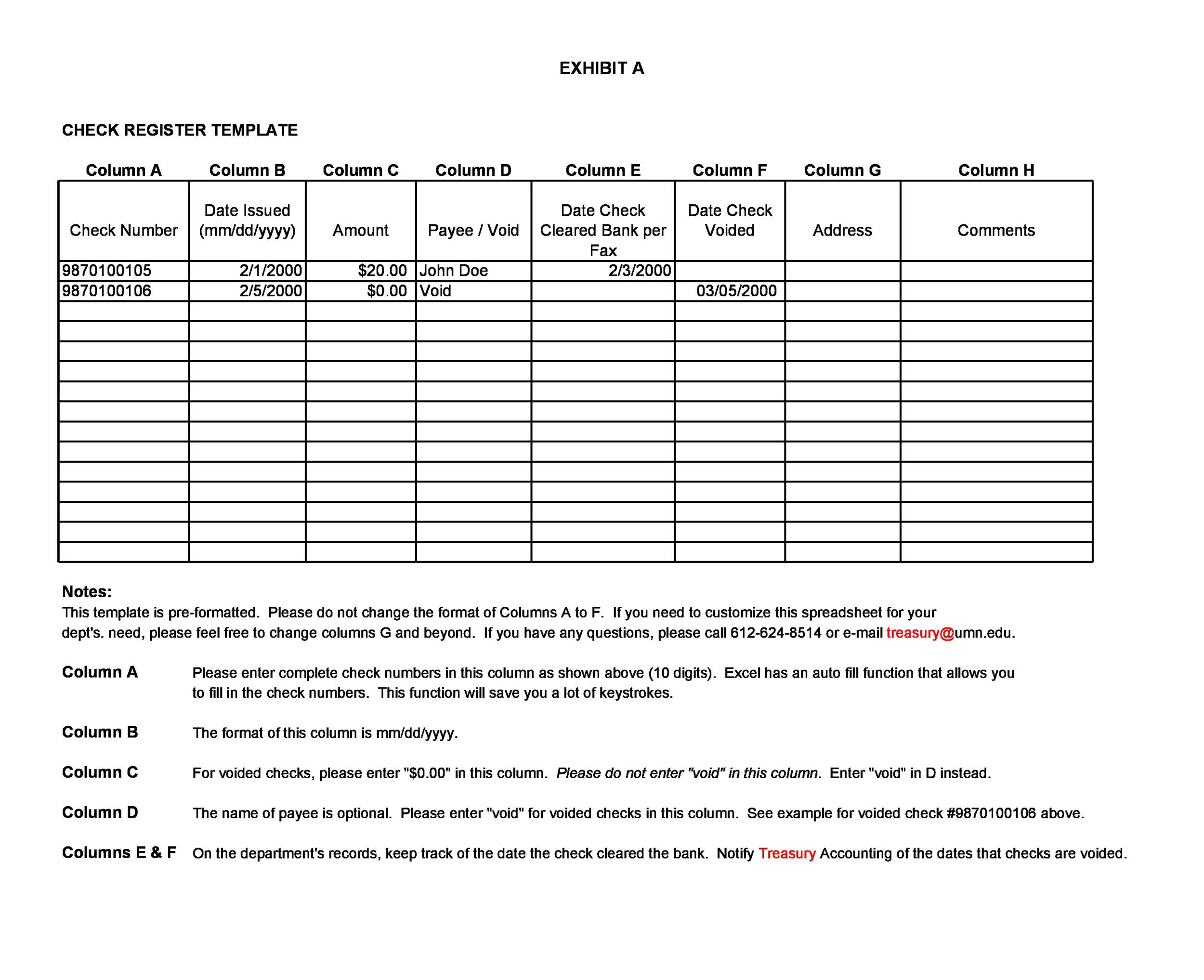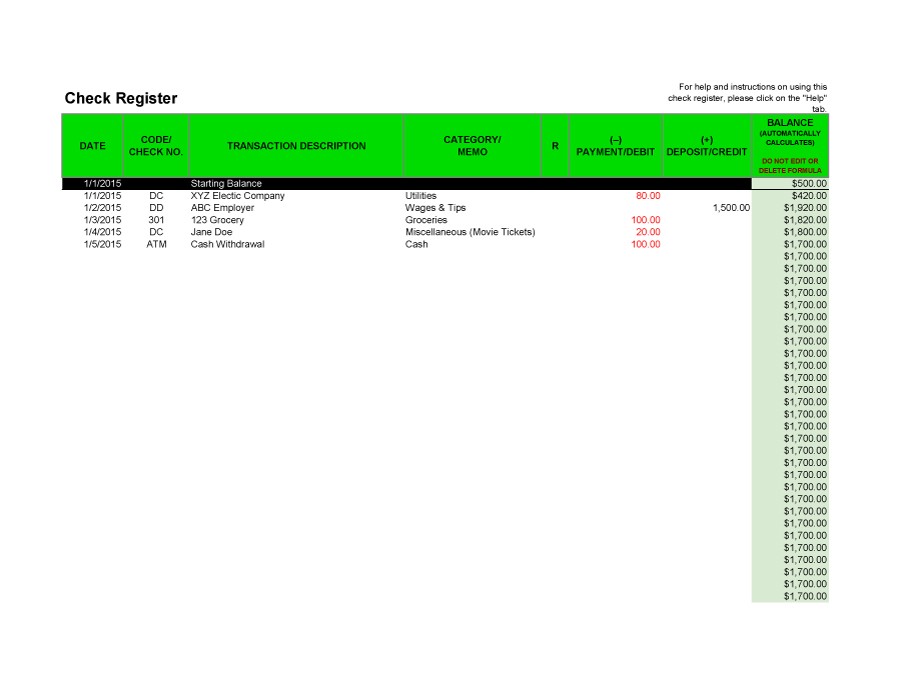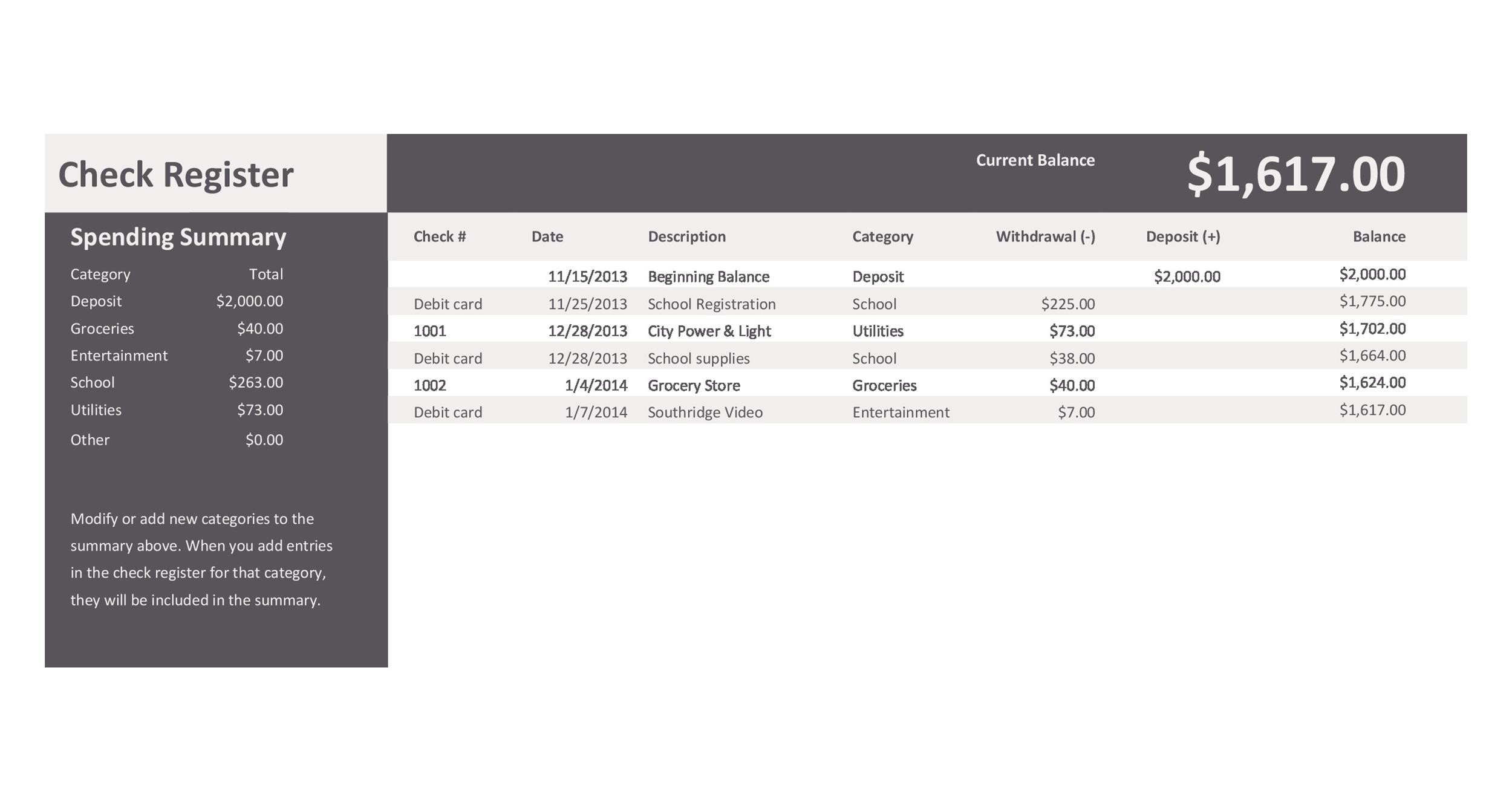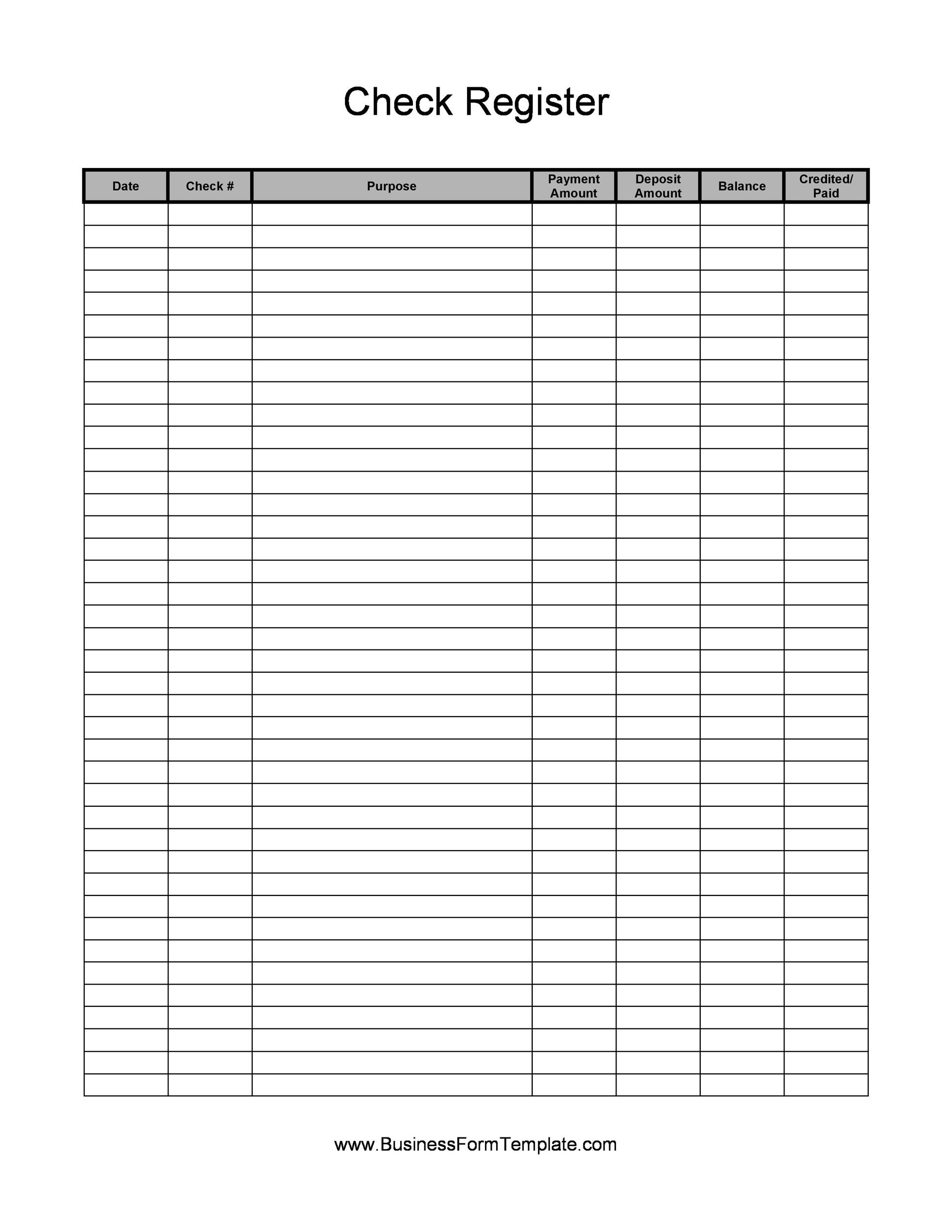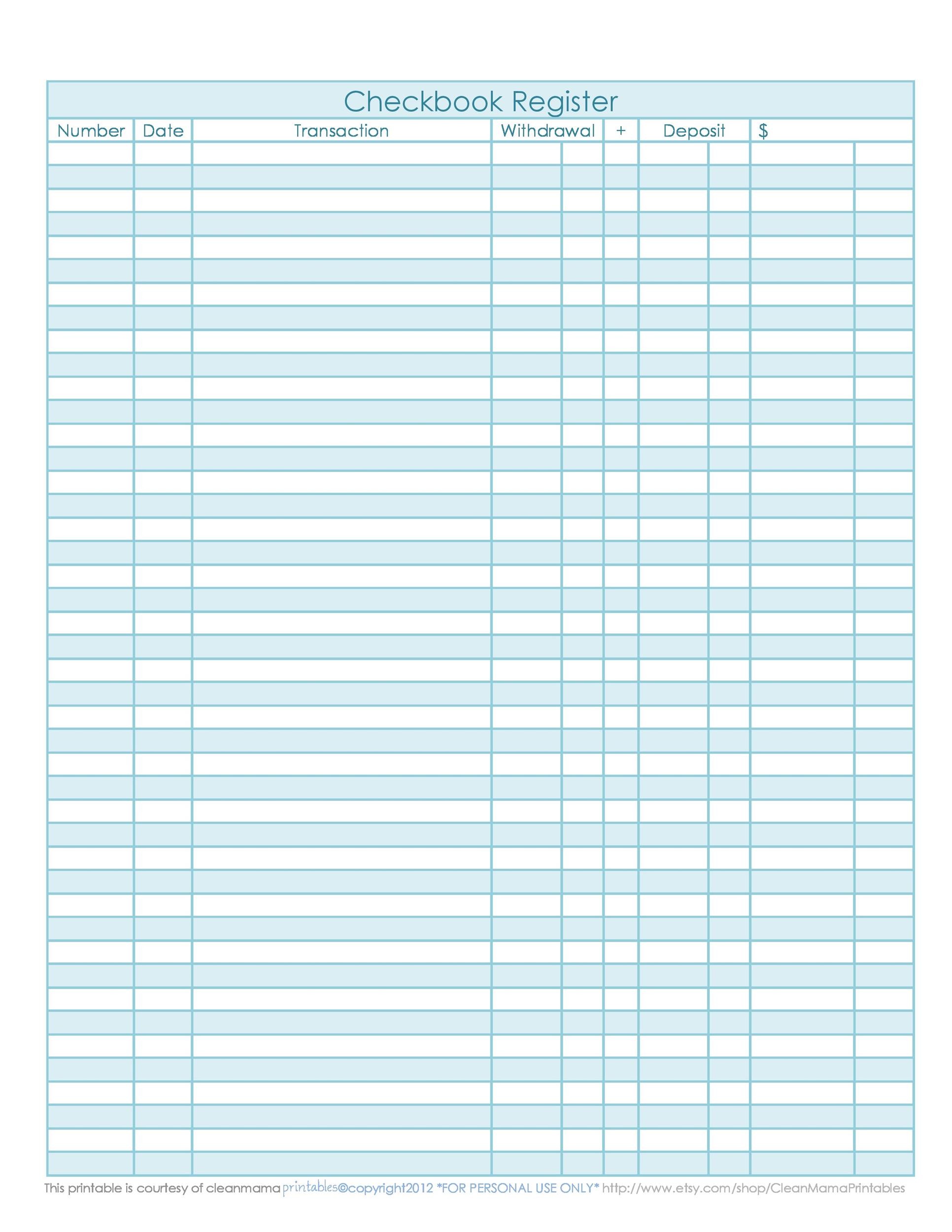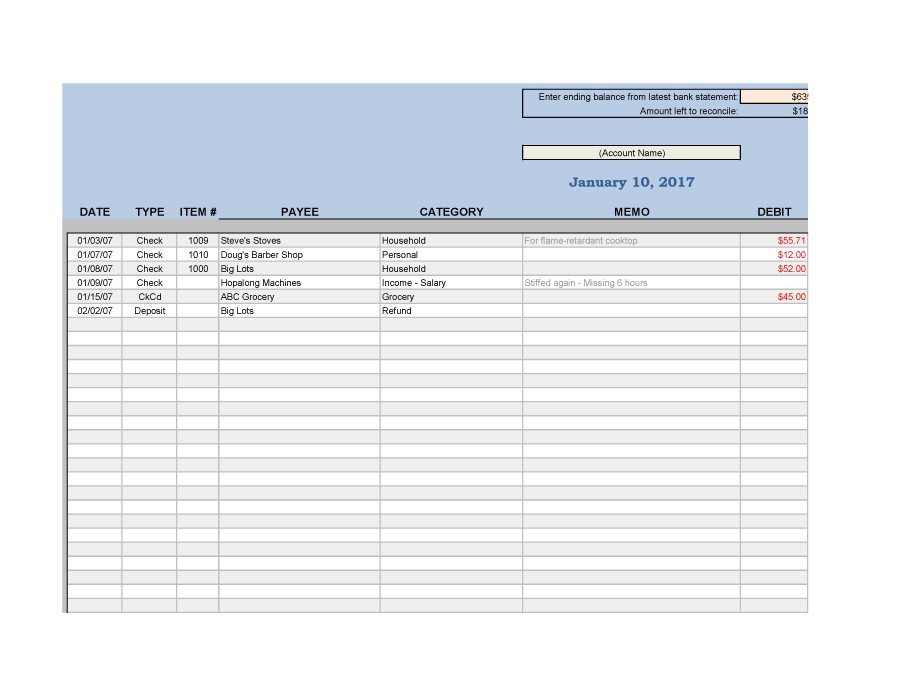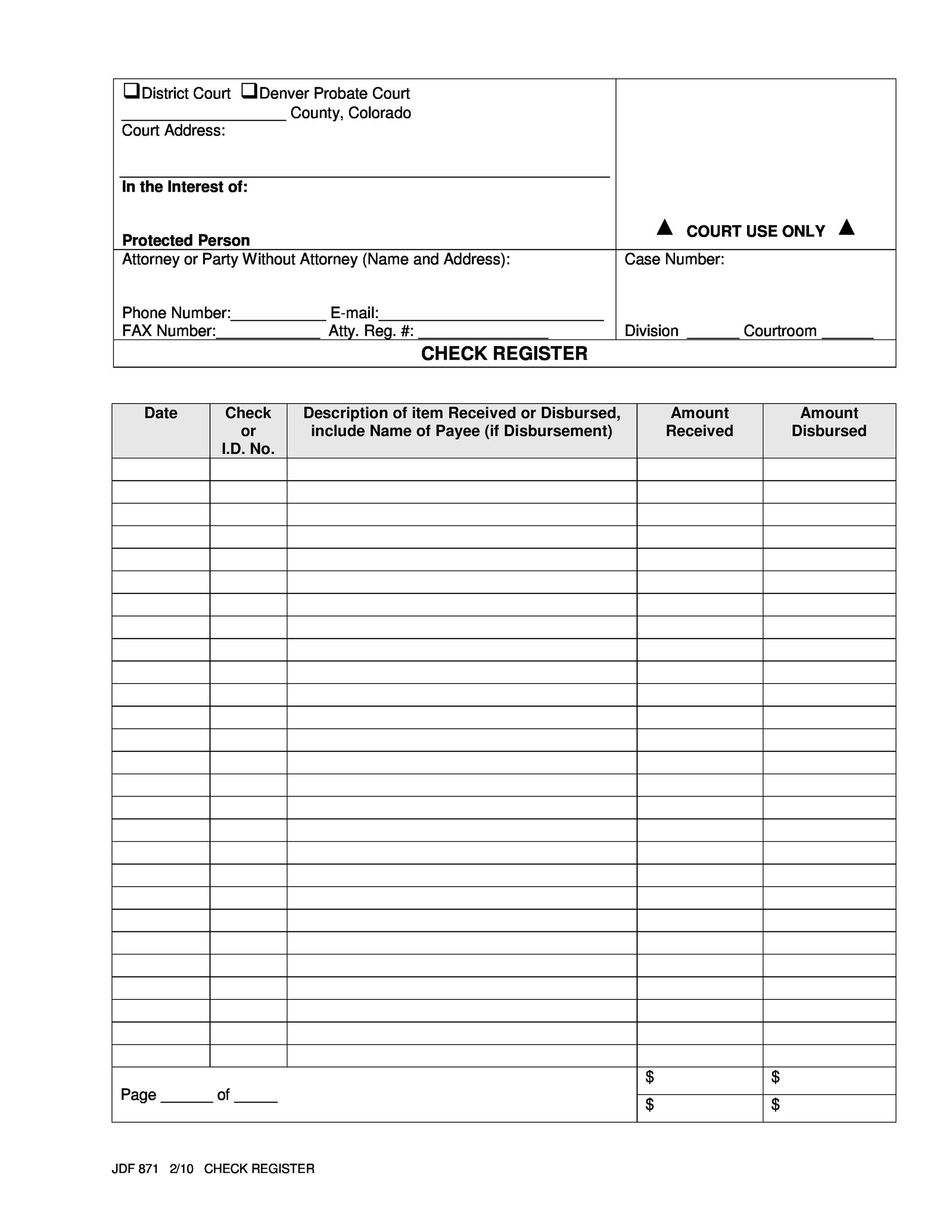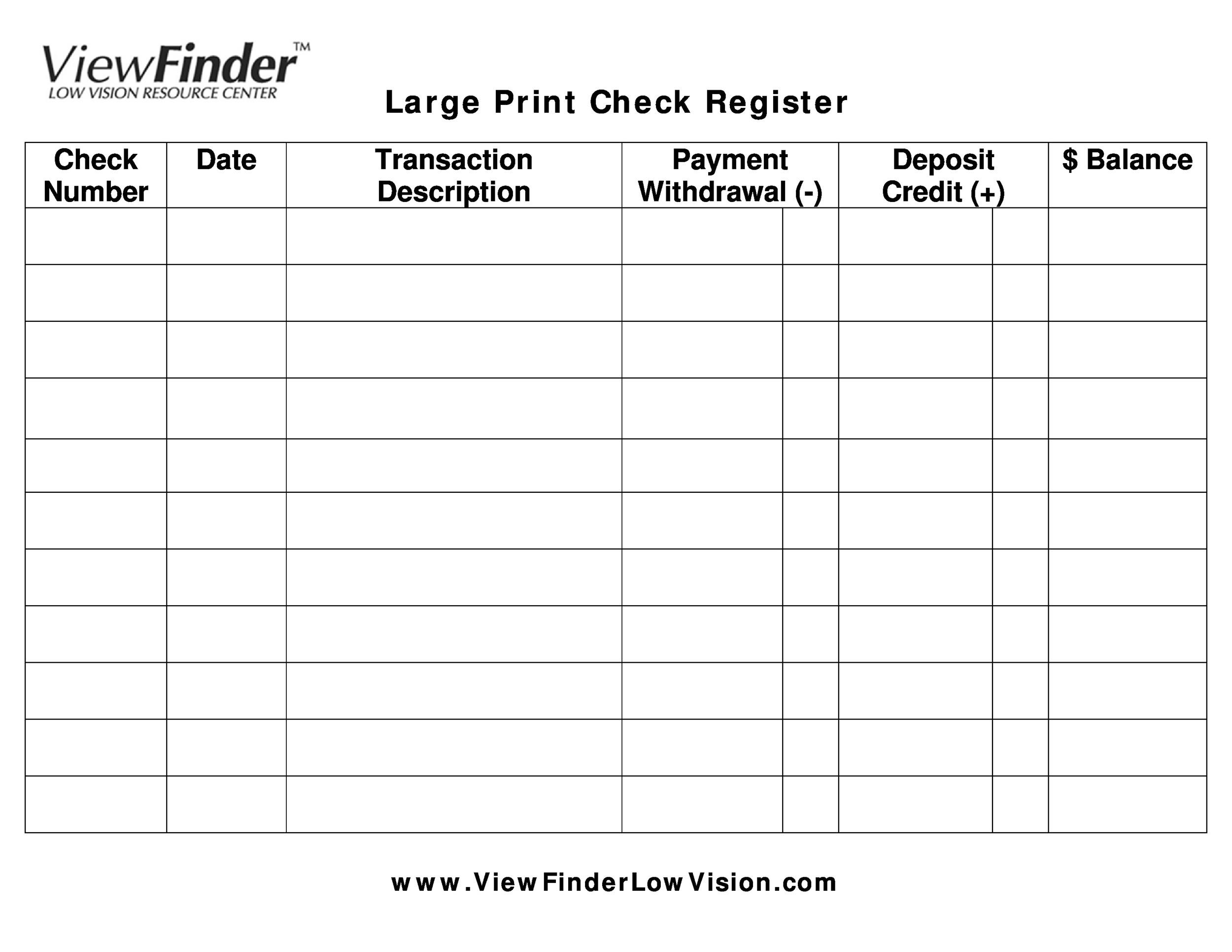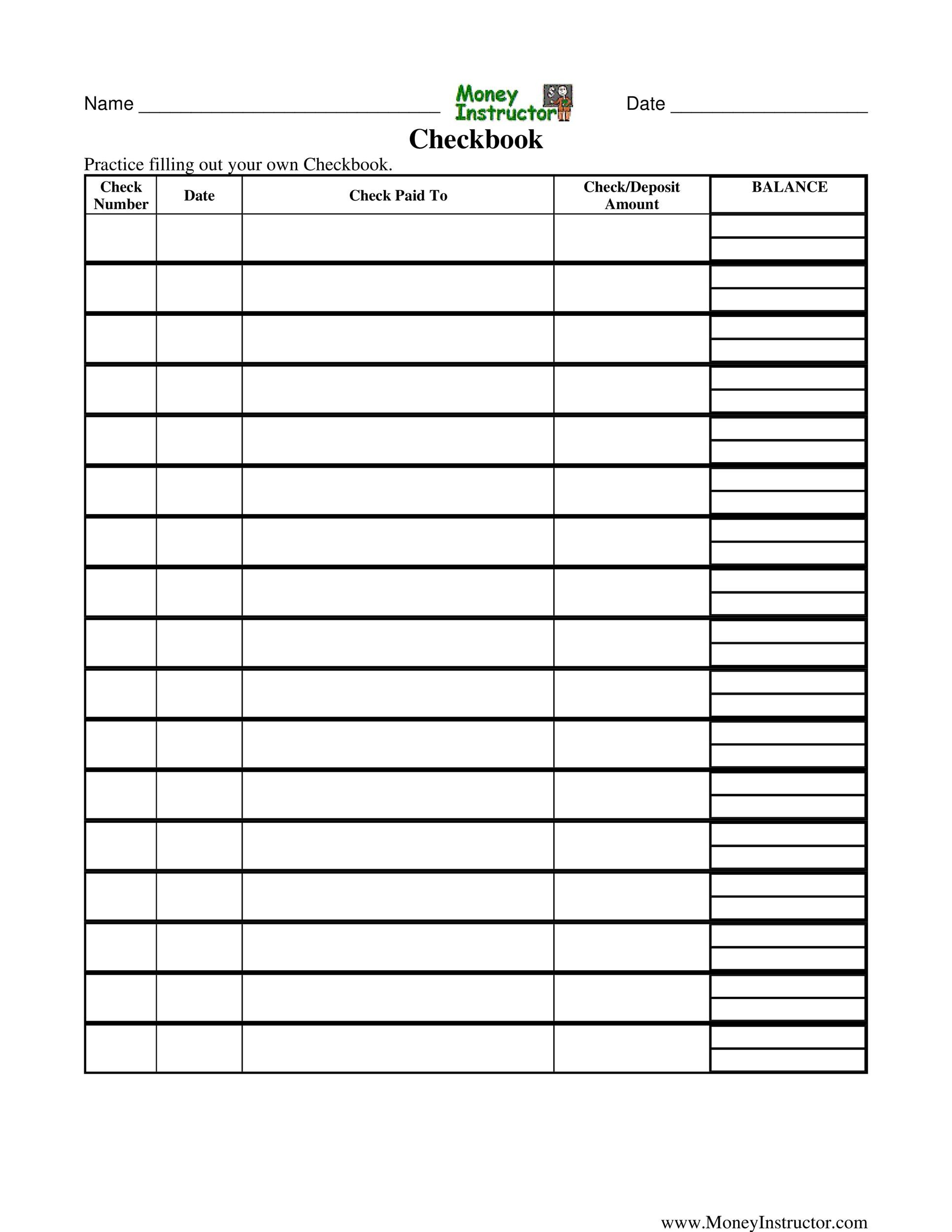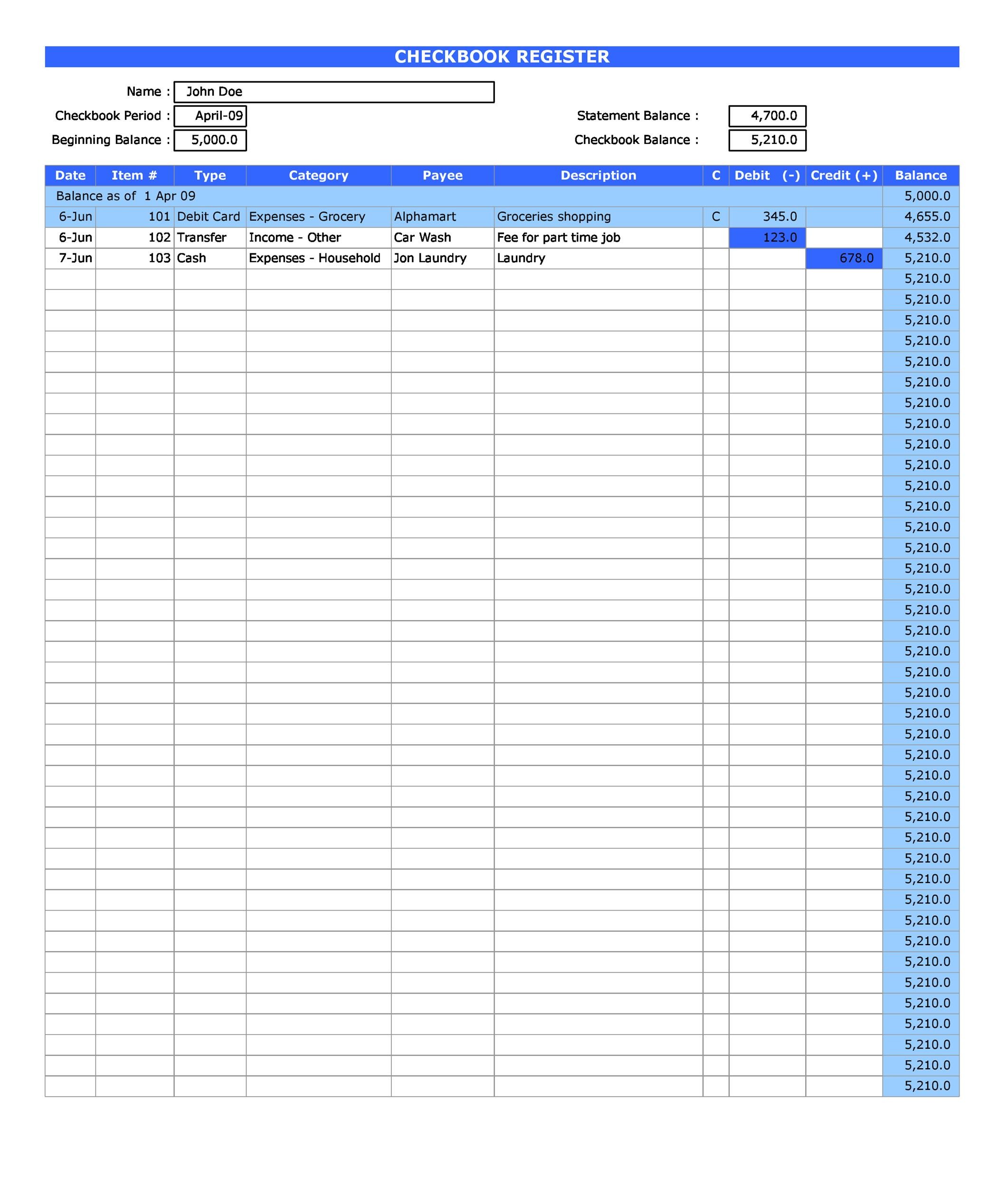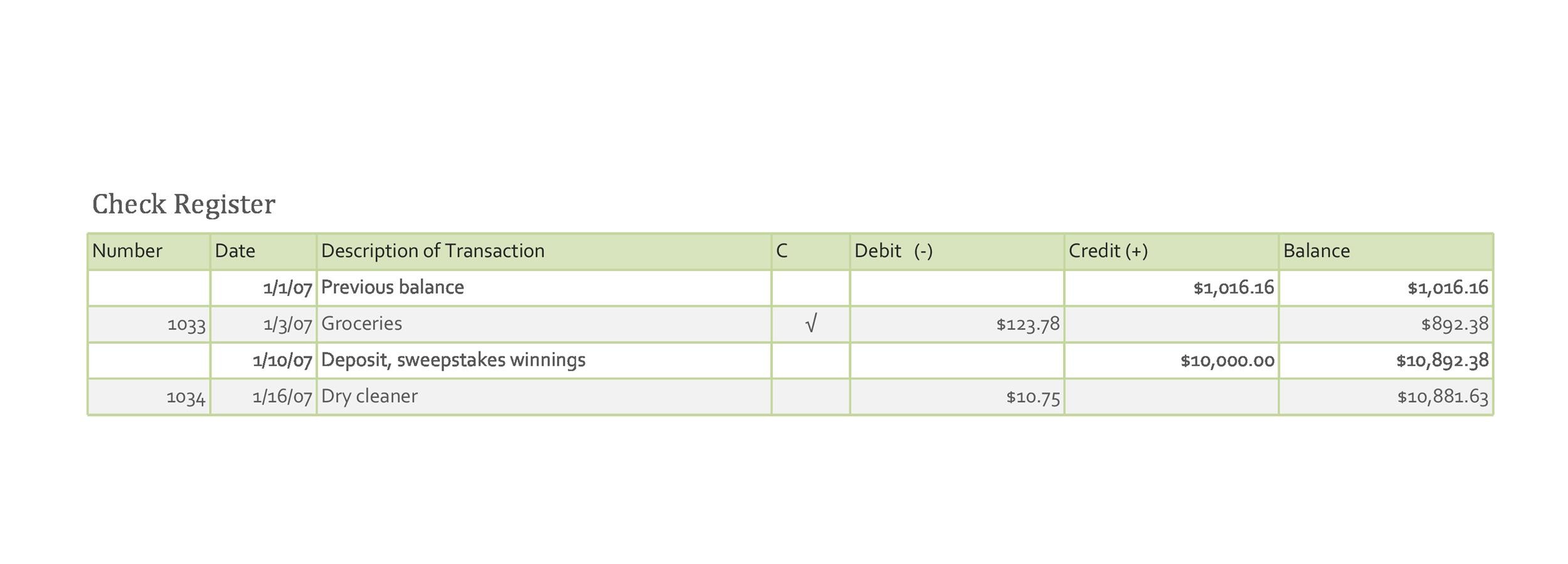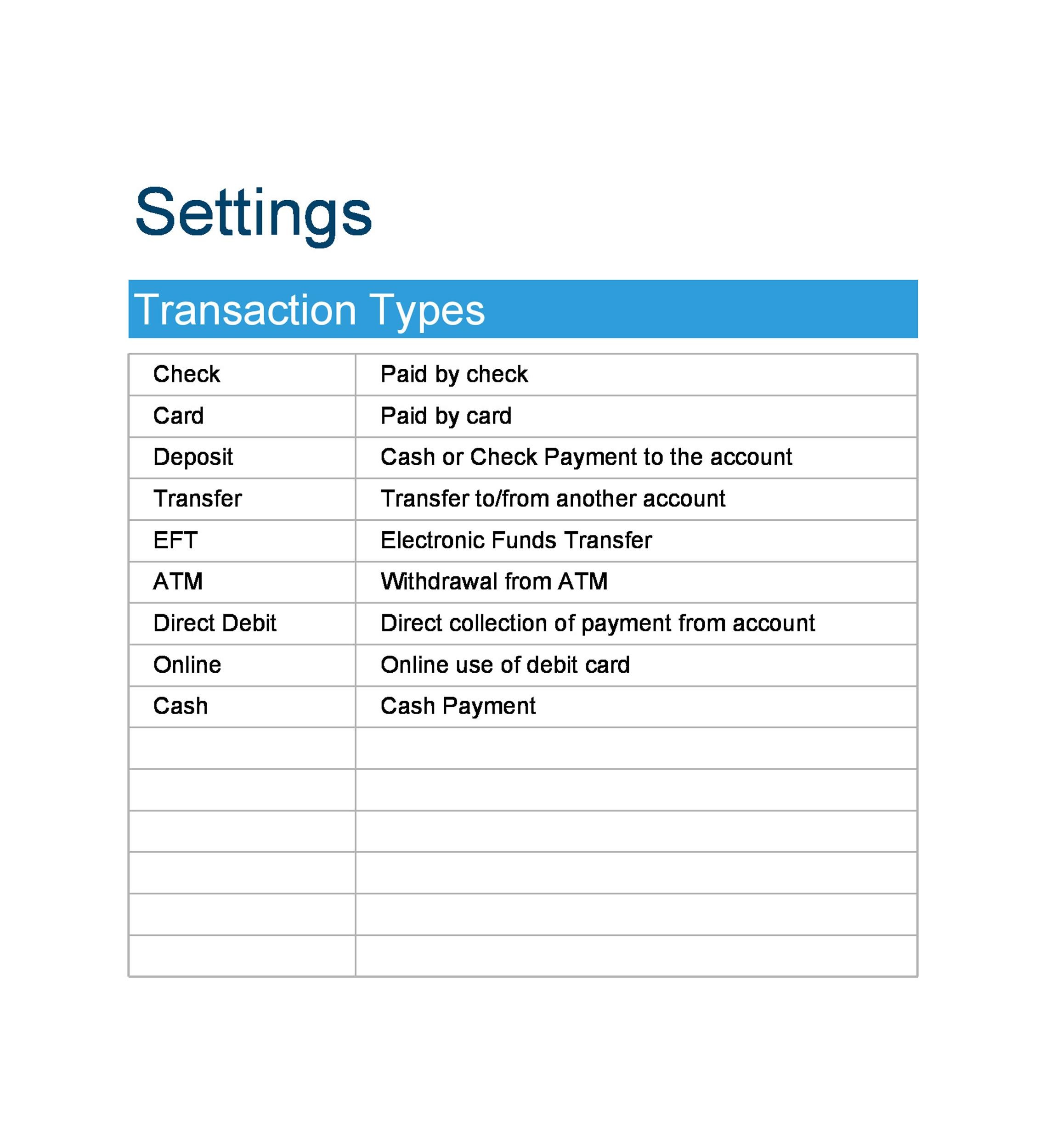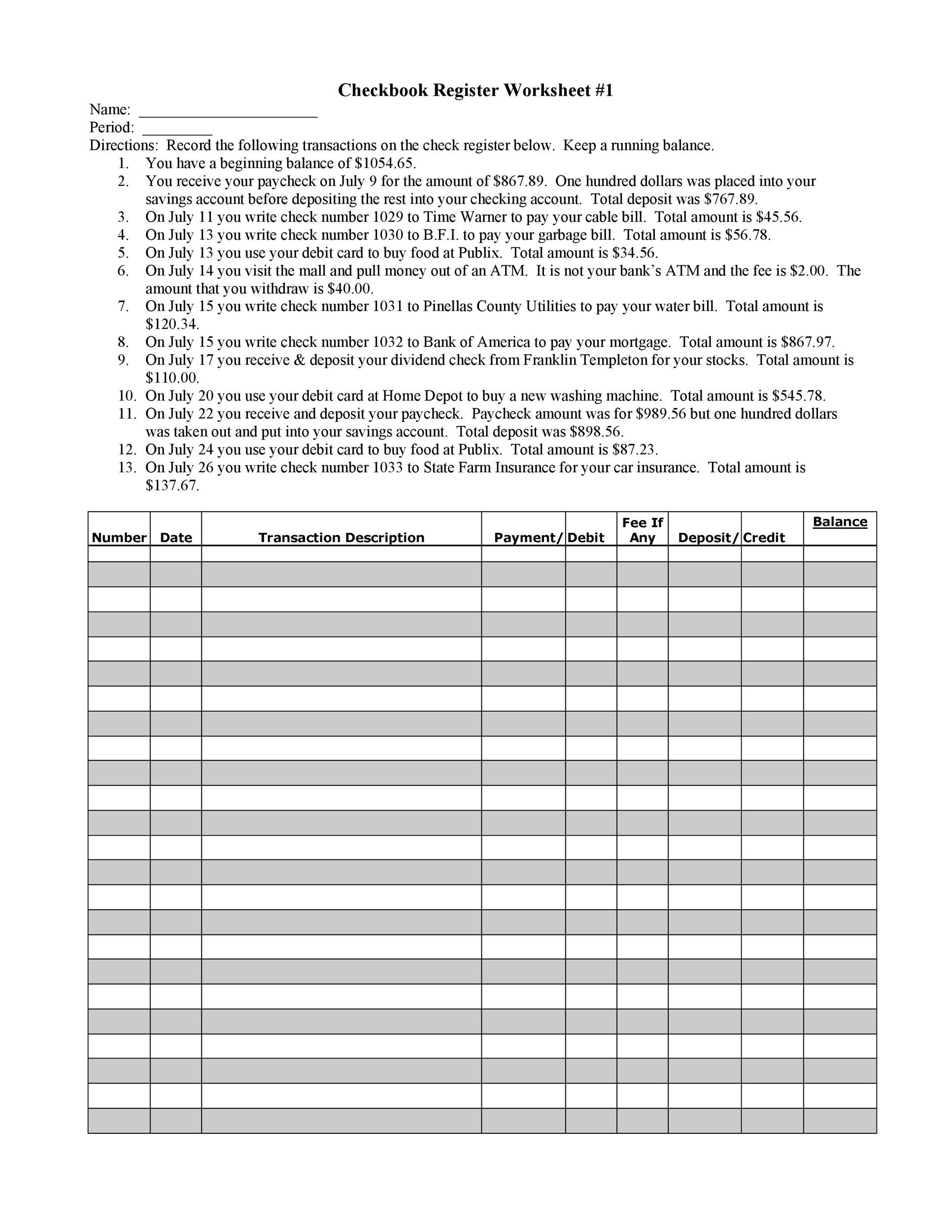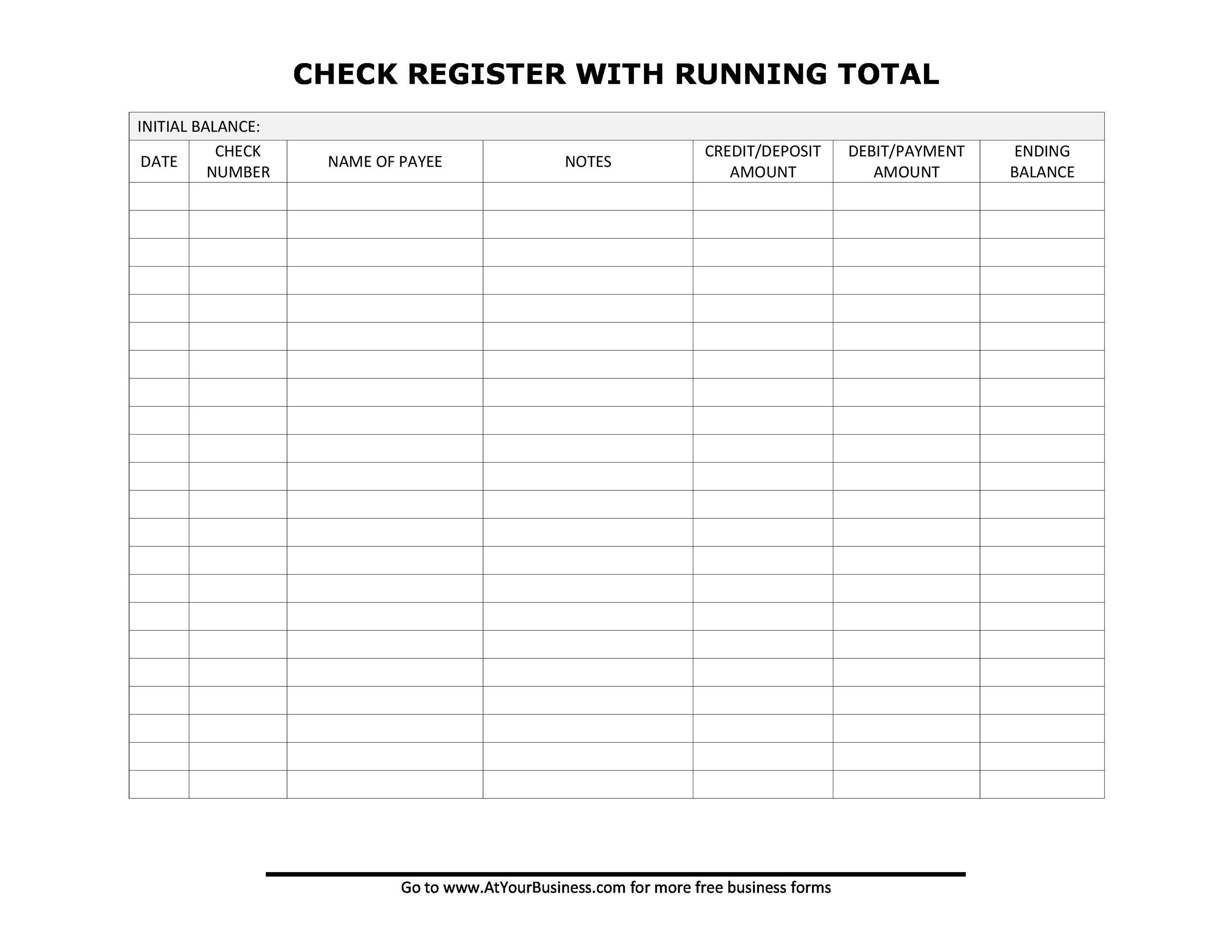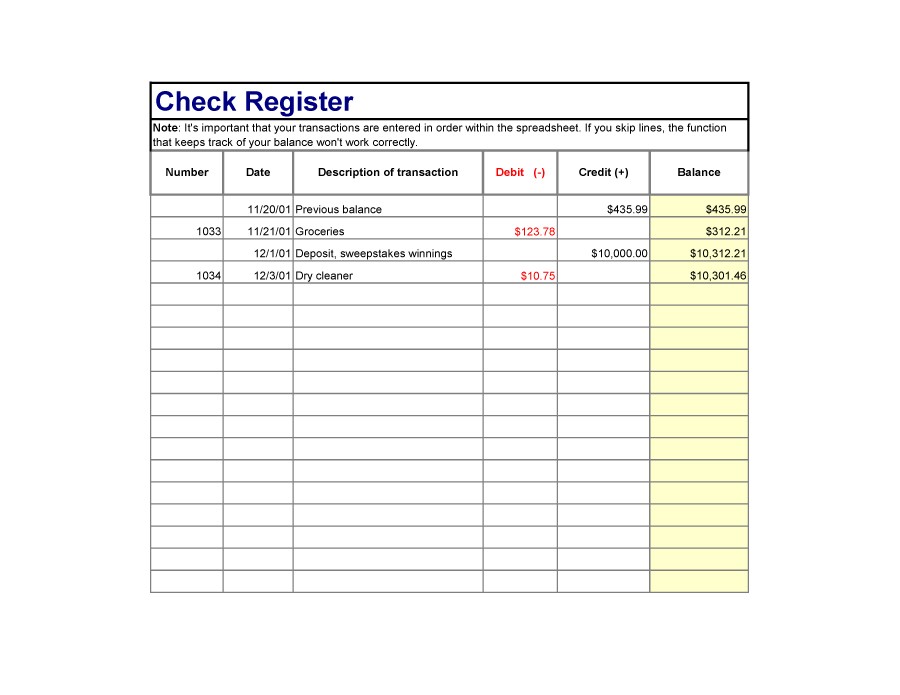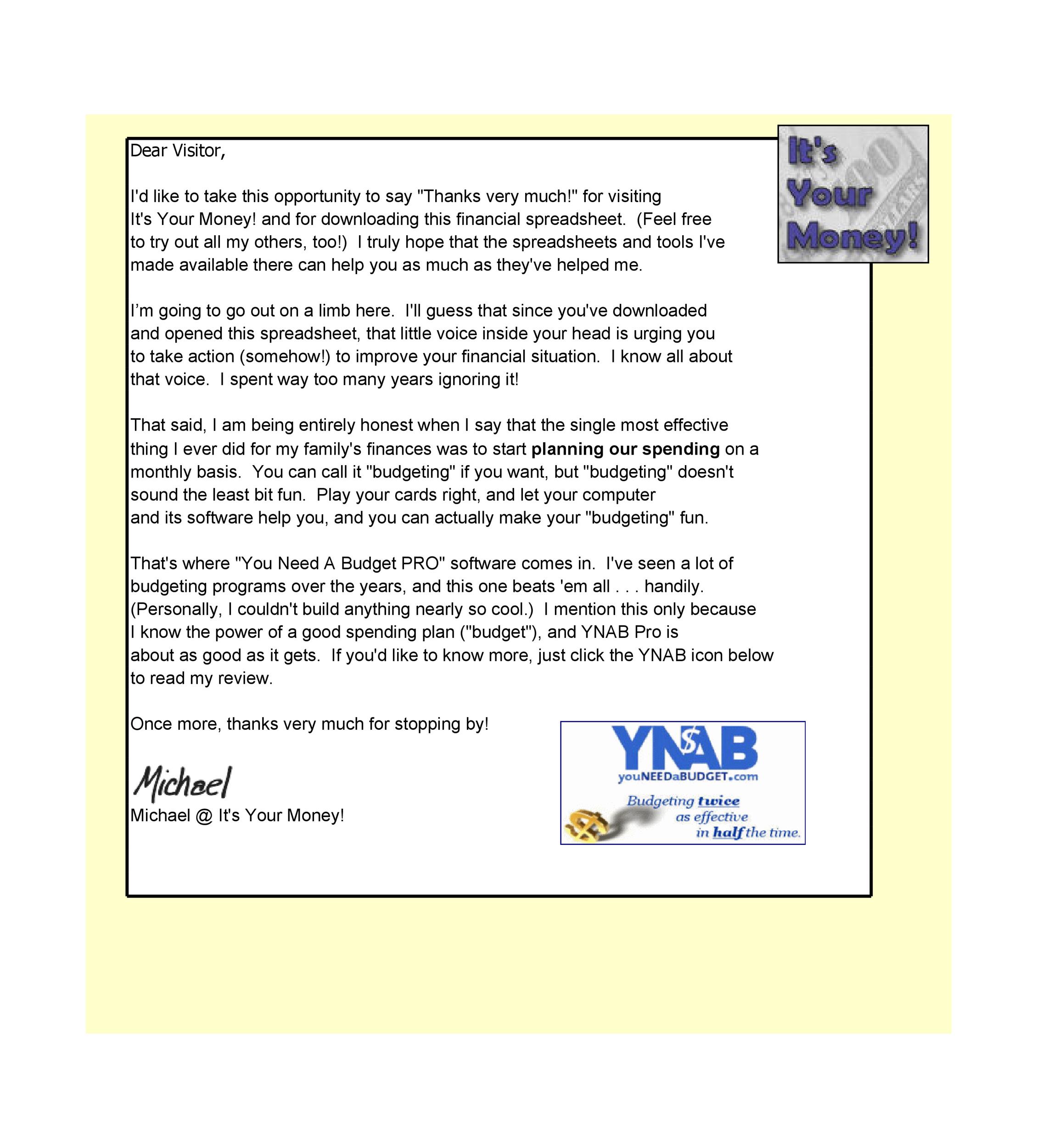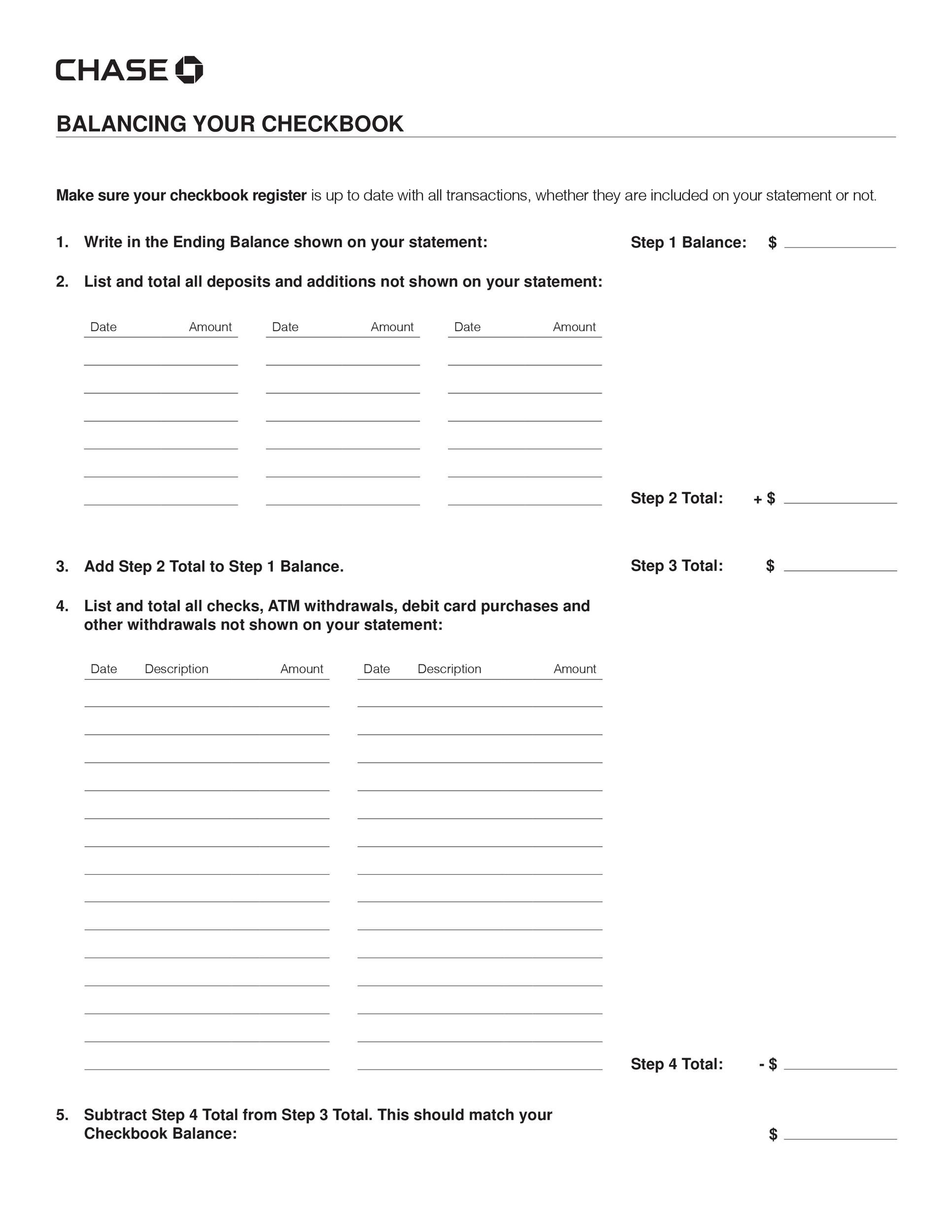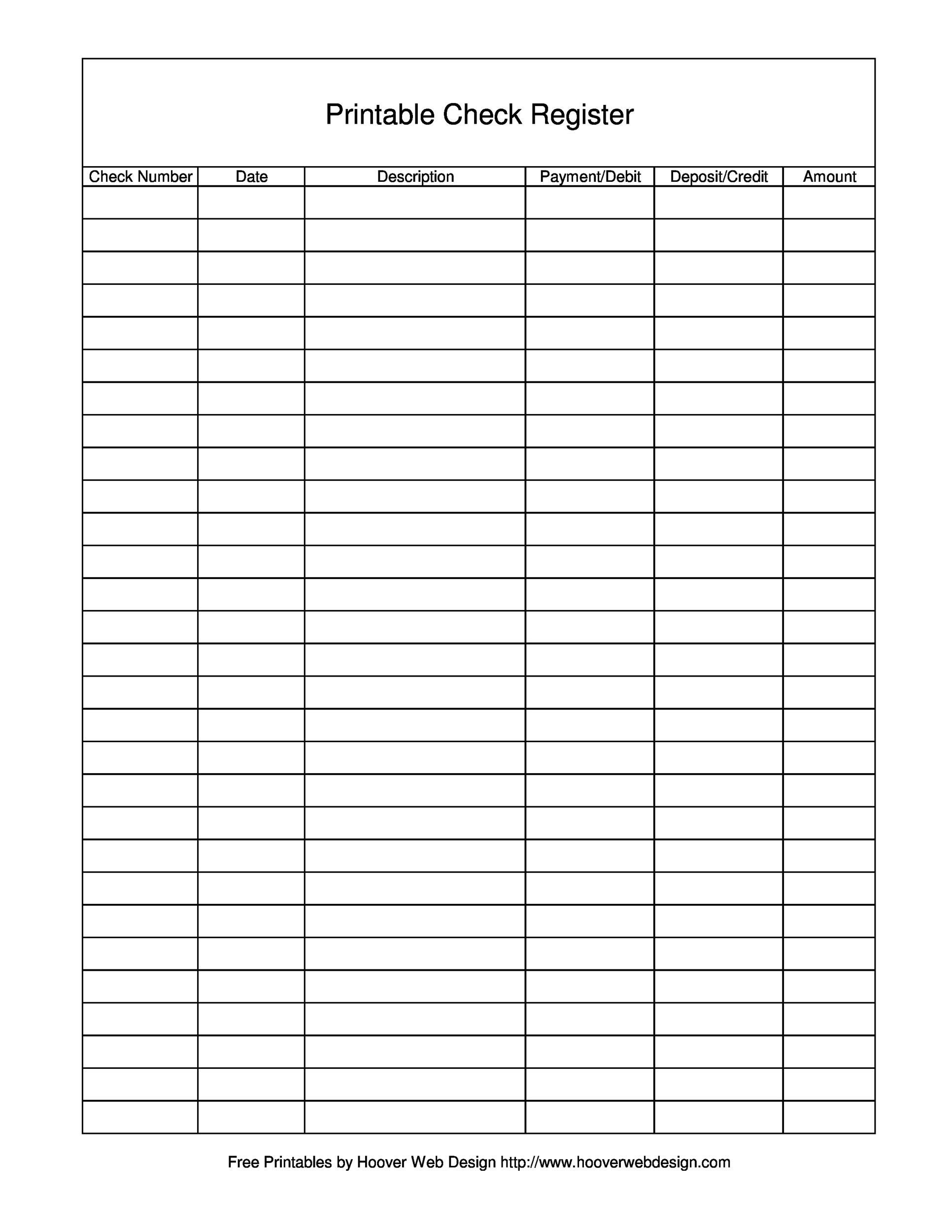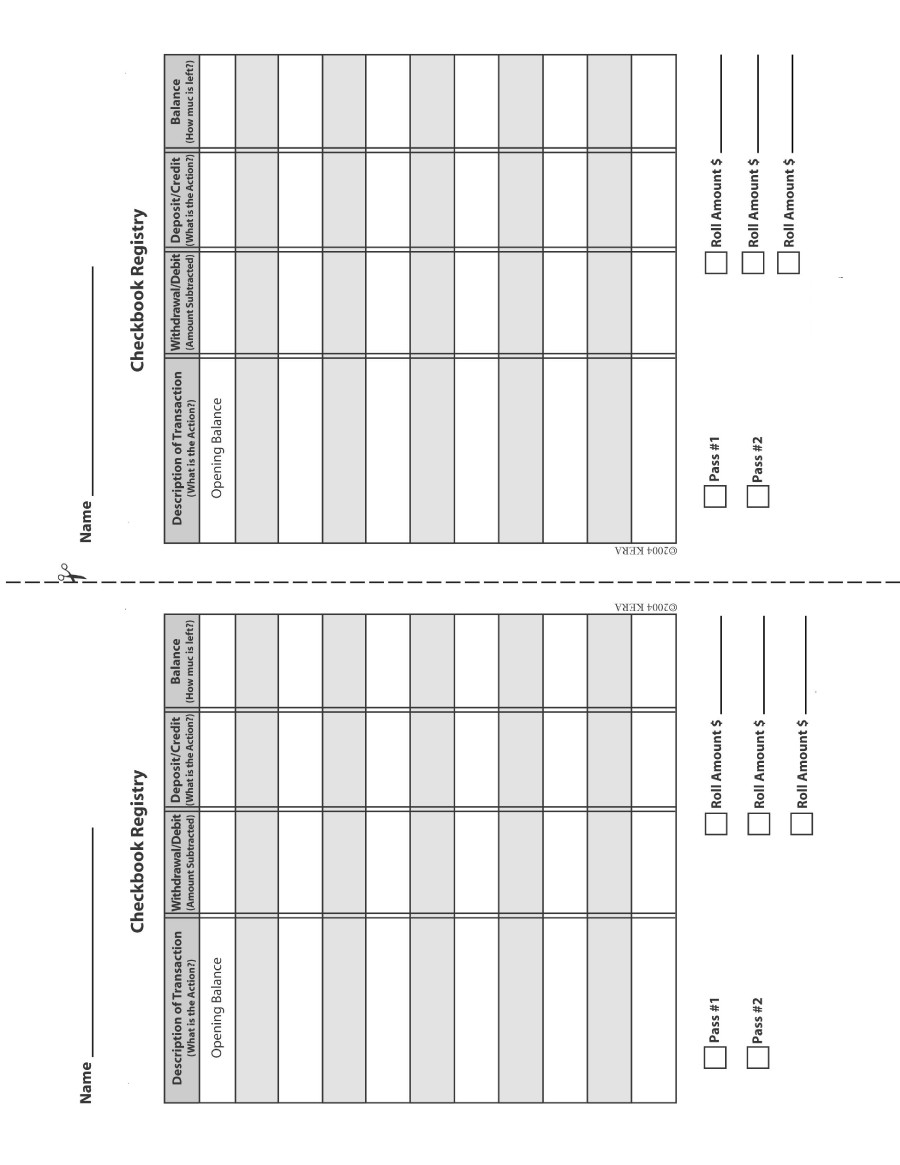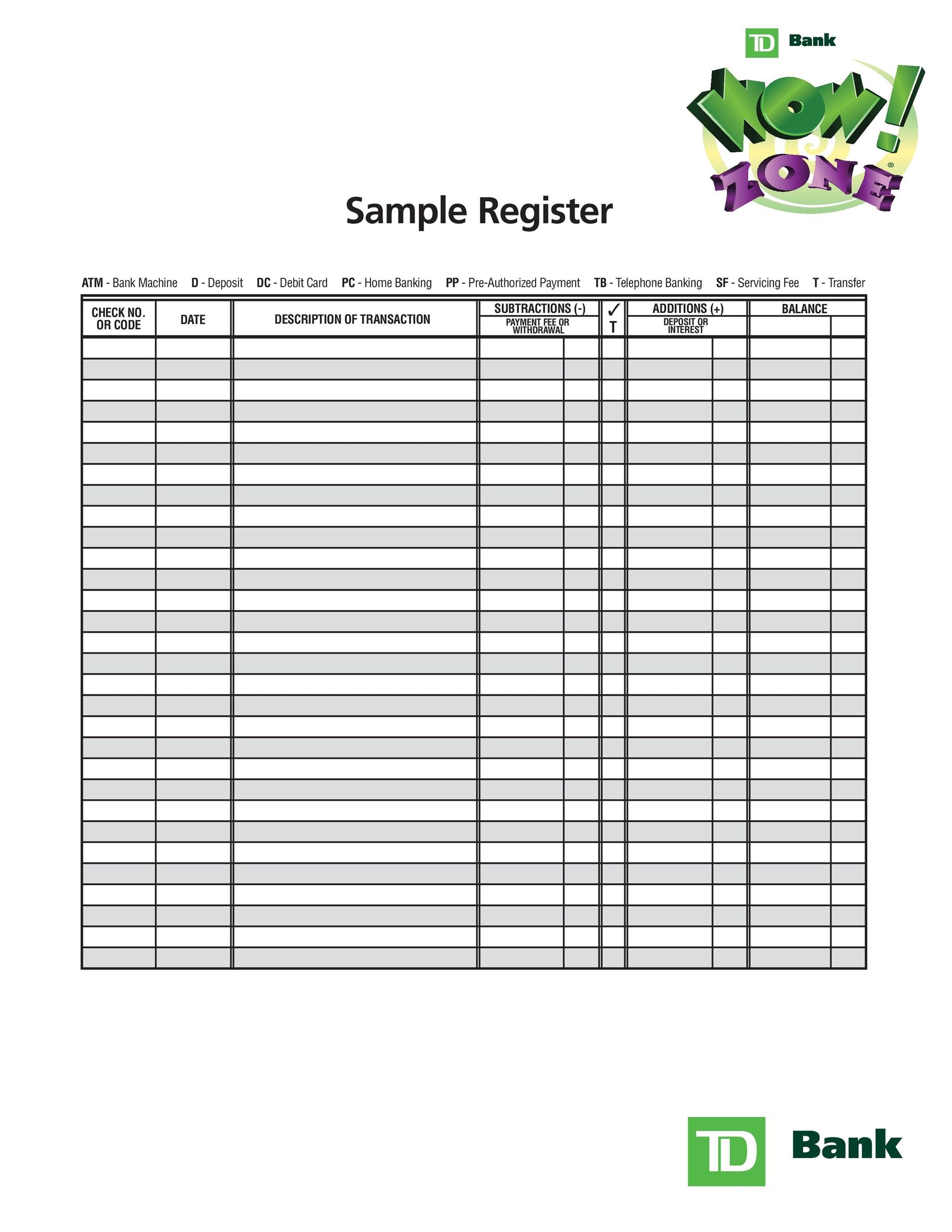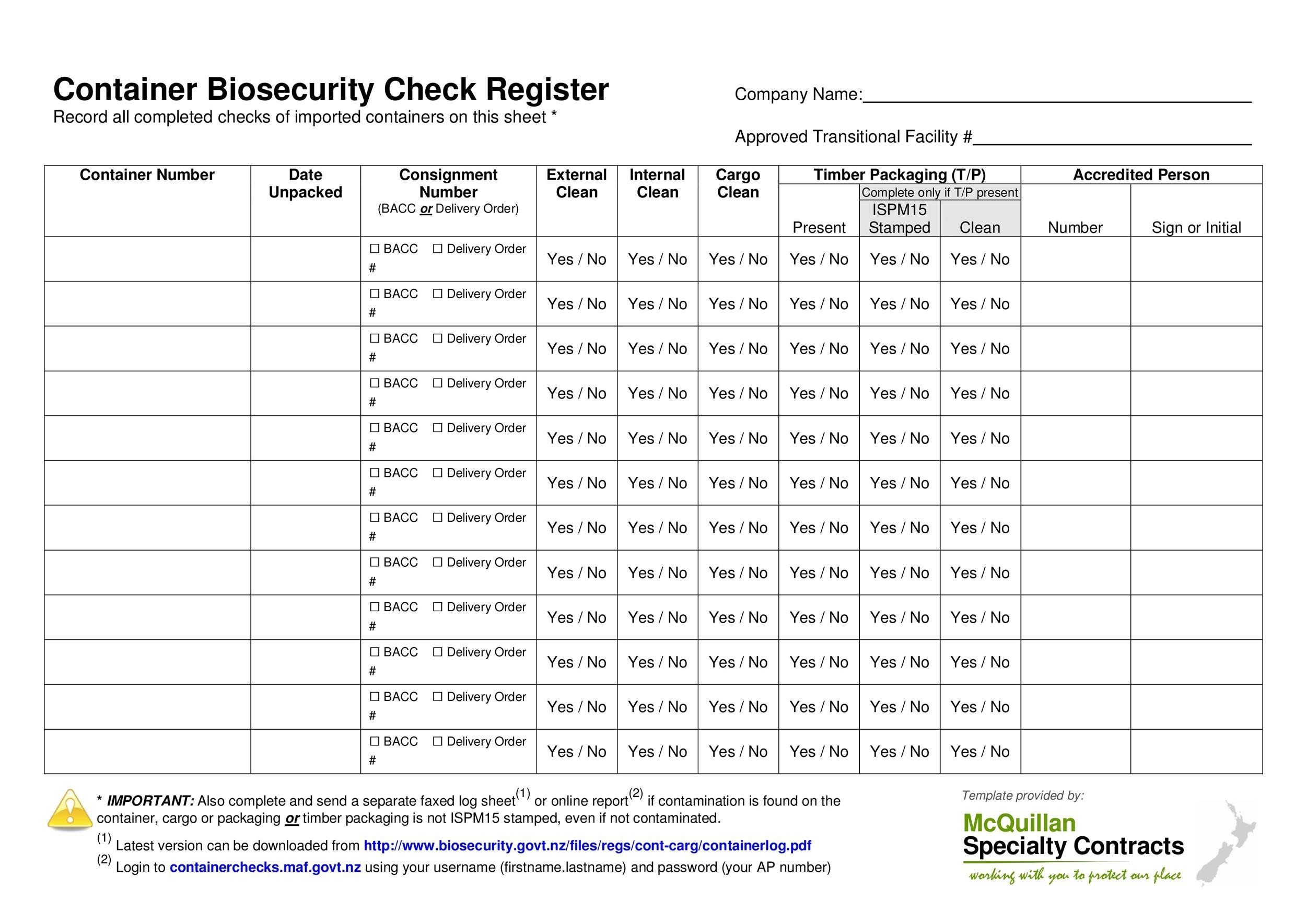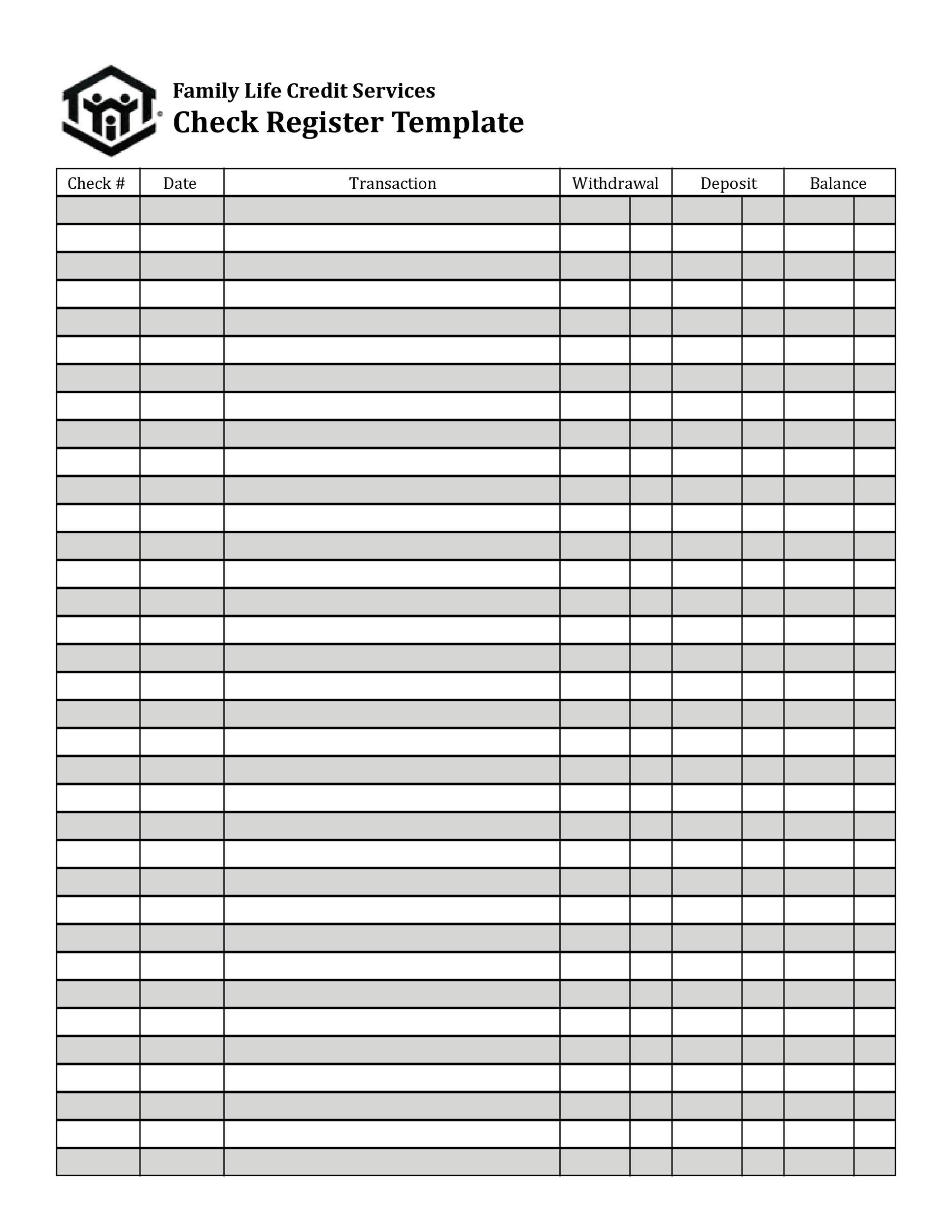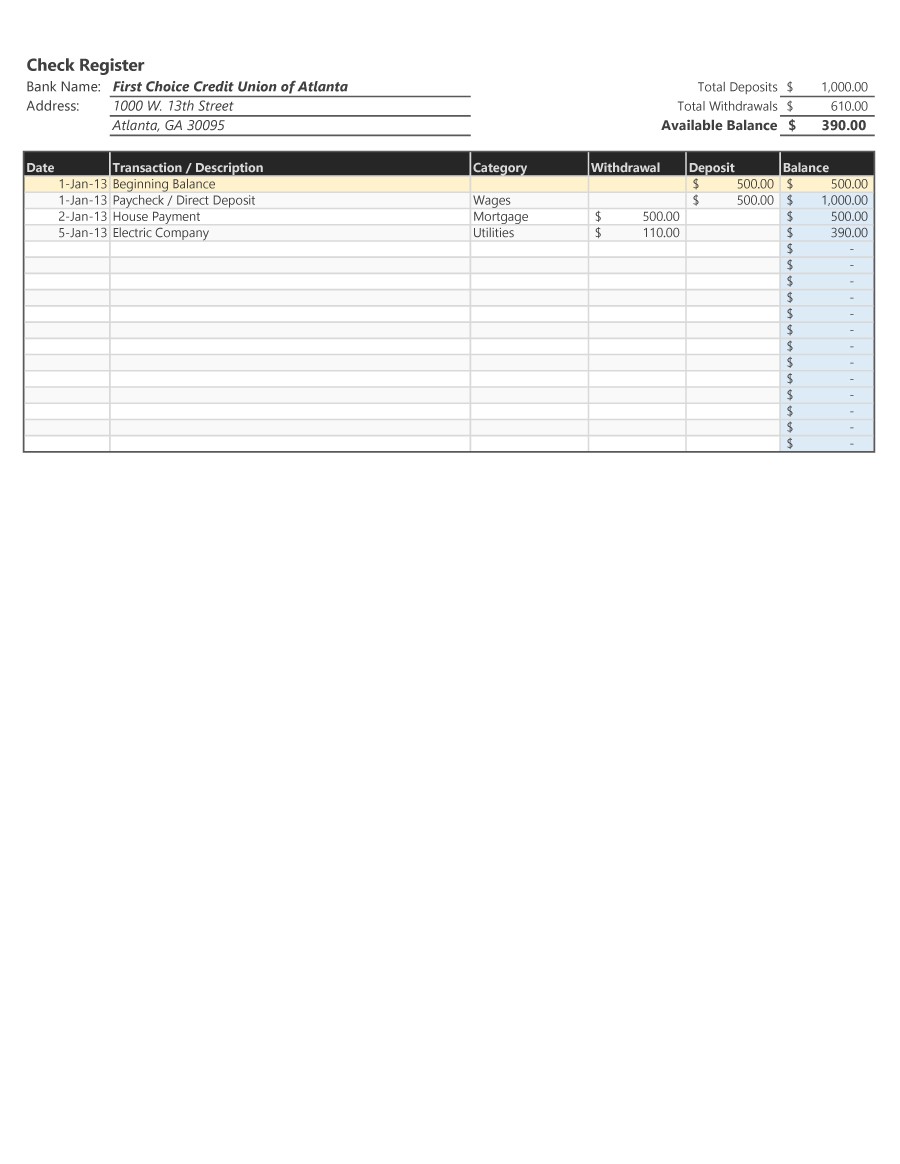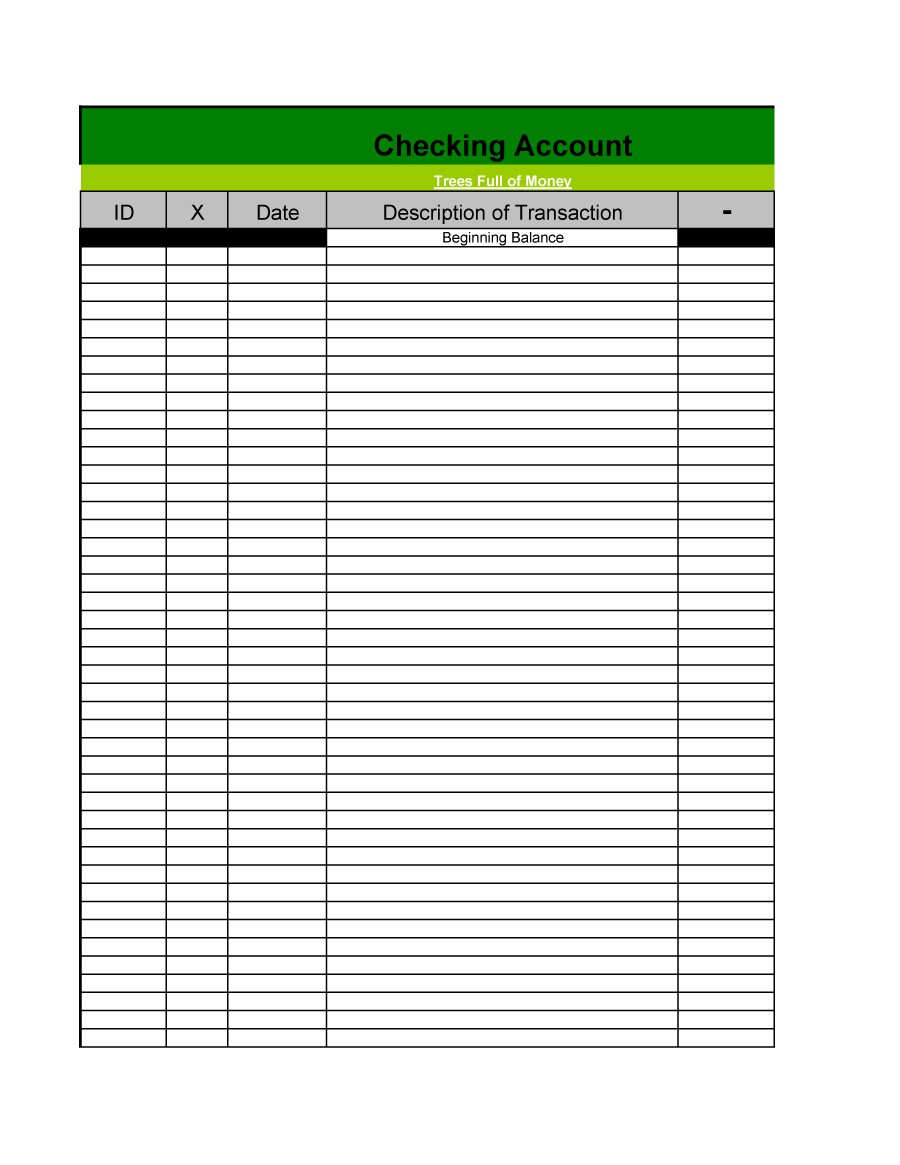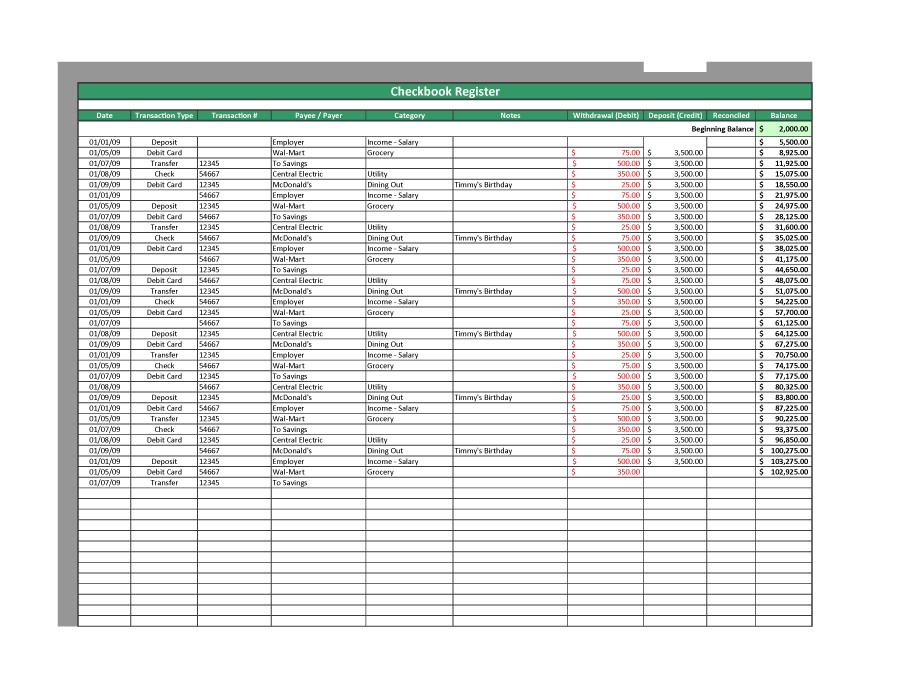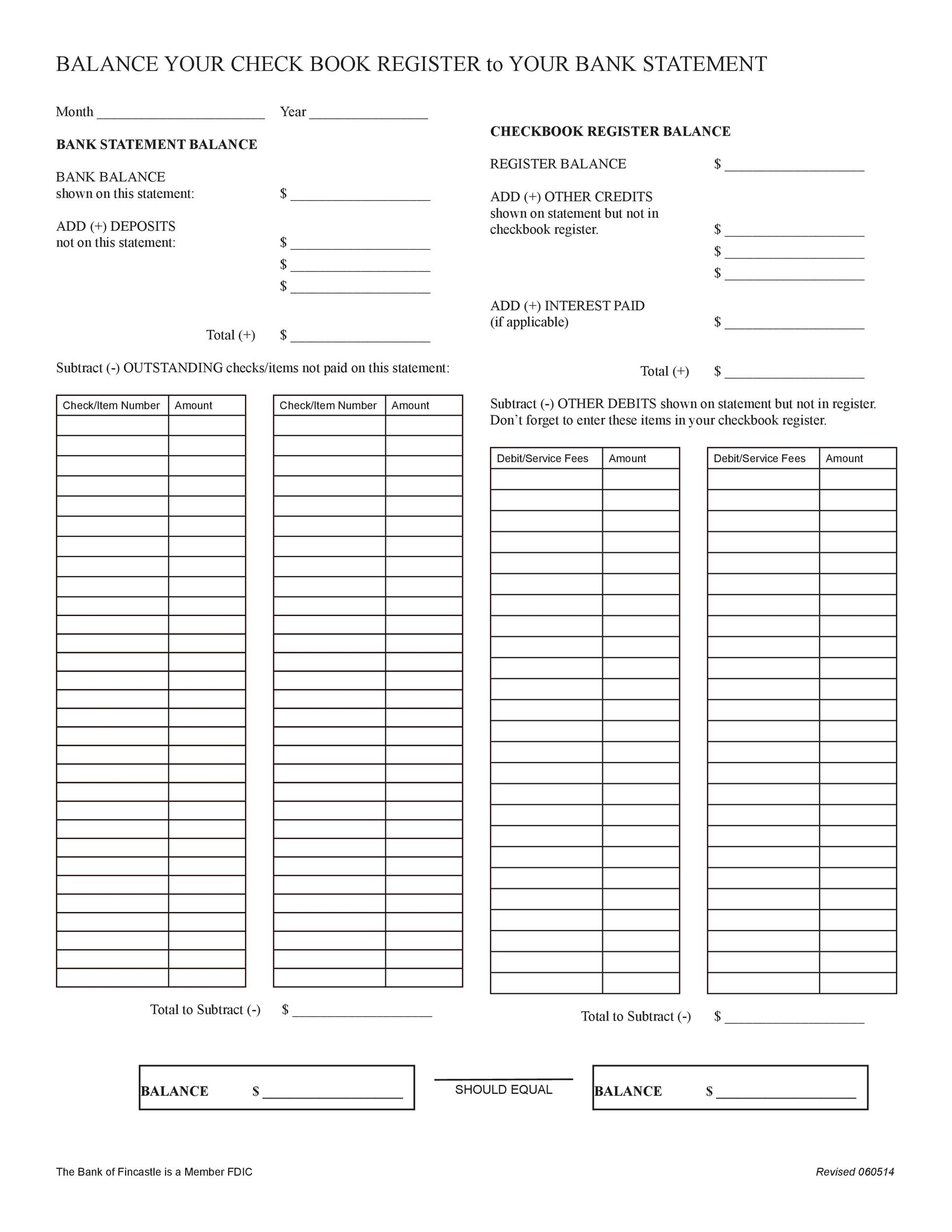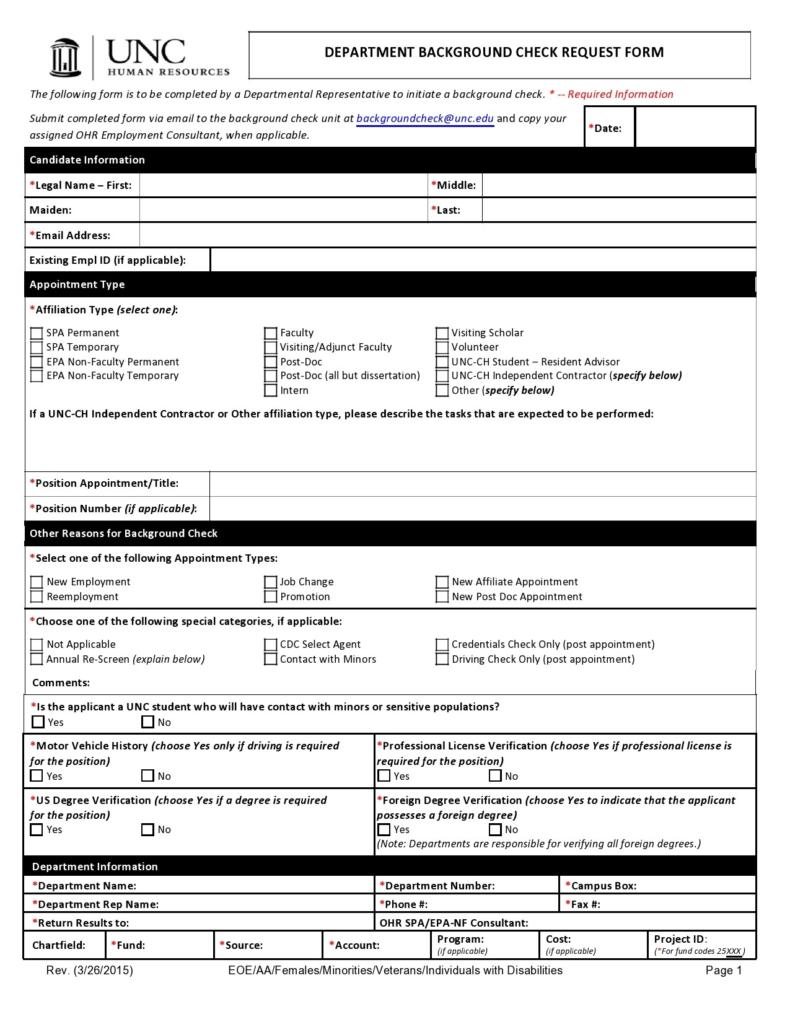Do you have a lot of transactions to make? If yes, then you may often run out of checks, isn’t it? When you pay with multiple checks every day, you also have to maintain a record of it. If you also have a lot of checks, so much so that they often drop out from your drawer, a checkbook register can be one of the best ways to keep all of them at one place, eliminating the chances of misplacing them. This is why many people often prefer online banking instead of making transactions through checks.
Table of Contents
But what if you need to see a specific check’s record but the bank’s website is down or is not working properly? Here comes the advantage of maintaining a checkbook register. You can check your records any time you want, which can be handy. You can access your records at any time because the checkbook register is available 24/7. Ensure to write about each and every check in your checkbook register; otherwise, it will not fulfill the core purpose.
Checkbook Register Templates
An Overview of Checkbook Registers
A checkbook register is an informal record of deposits and withdrawals to and from your account. It is also known as a Check Register. It provides a comprehensive record of all credits and debits that you have made from your bank account. The statement held by the bank, a record of all necessary withdrawals and deposits from and to your checking account, is known as the bank statement.
Check registers are the opposite of that. This is a rough register where you record all your transactions done through checks for personal record-keeping in case you need to match and cross-check your checkbook register and bank statement. Also, a checkbook register can come in handy when your bank’s website is down or you do not have internet access.
A check register includes the issuing dates, account names used, check numbers, credits and debits associated with the account, transaction descriptions, etc. Check registers are used before posting anything in the general ledger. Normally, there are similar accounts found in this register. It depends upon the type of transactions and the people you are dealing with. For instance, if a business owner deals with several retailers, a check register would have their name and similar description in the register.
Typically, a check register helps you determine the balance in your checking account. If individuals maintain a check register, they can see the disbursements and all types of transactions associated with the account. If the check register is for a corporate business, management can also use it to evaluate how much cash has been disbursed by the company and can keep a track of cash flows. Companies and individuals can see their check register and make necessary decisions too as it highlights the real picture of expenditures and investments.
What Does a Check Register Cover Under it?
Once you write a check, you need to record it in the check register. Almost every check register is the same and has similar titles. Check the common titles that a check register has.
Check Number
This is the number that is shown on the right-hand side of the check. In some checks, it is also on the bottom. Normally, checks are in chronological order. This is why there is no harm, even if you make a mistake or an error. You can simply write the check number and make sure that you are not missing any check.
Date
This is the day you write the check. You need to make sure that you write the correct date as the person for whom you are writing it may not get it the amount in their bank deposit in case of an error.
Description of the Transaction
This is the description that determines to whom the check was given. You can name it in any way. Generally, choose the description of the transaction with the name of the person. For instance, if you are dealing with a retailer for your business, mention their name in the description.
Payment Amount
This is the amount of payment that you write on the check. You need to include the exact payment in the section. Regardless of whether you made the payment using your debit card, credit card or through online banking means, you need to ensure that the payment exact amount goes in this section.
Withdrawal Amount
This is the amount of money that you took out from the bank due to any reason. You need to ensure to write the complete and exact amount.
Fee Amount
This is the fees that may have been incurred during the transaction. For instance, if you have taken out money from the ATM, you will be charged some extra money as service charges. This is the amount that is neither associated with the bank nor the transaction. You need to make sure that you write the fee amount in this check register column.
Deposit Amount
This is the money that you have deposited into your checking account.
Transfer
If you have two accounts and for any reason, you are required to transfer the amount from one account to another, you need to write this amount in the check register.
Balance
This is one of the most important sections in the check register. This is the balancing section which is based on the transaction you made. Depending upon the transaction, you either have to add or subtract the amount from the previous balance for it to match with your current balance. For instance, imagine you bought something for $300 from a retailer and paid them by check. You had $500 in your bank account. You have to ensure that you correctly subtract (if you take money out) or add (if you put money into your account).
Free Checkbook Register
Why You Should Use a Checkbook Register?
A Checkbook register, or check registers, are really essential to maintain if you often deal with checks. This omits the chances of errors and mistakes. Besides this, there are several benefits to keep a check register as listed below.
Provides Real-Time Information
No matter how quickly technology is growing, it still cannot entirely replace the importance of several tasks which need to be done manually. For instance, if you think that online banking can help you keep track of your checks every time, it might not be possible when the website is down. Besides this, what if you do not have an internet connection to see your checks.
This is where you will realize the importance of check registers. These manually-updated registers can be really helpful and can provide real-time information about your finances and bank account based on up-to-the-minute stats. You need not worry or have any second thoughts about the account balance if you regularly maintain a check register.
Tracks Everything
When you ensure to maintain your financial records in your check register, you will be able to track every single transaction. Be it your checks, deposits, ATM, withdrawals or anything else, you can track all of it from one place.
Free of Cost
While online banking may have some charges, keeping a checkbook register is free of cost. Some banks also have free check registries. If they do not provide you that service, you can make up your own. Making your own check register is not very difficult nowadays as you can find free printable checkbook register templates online. Simply download them, get them printed and use them.
Budget Aid
When you find your income and expenses all at one place, you are able to make a budget as well. The information from the check register can help you in building a practical and accurate budget.
Record of Payments
If you often make all your payments through checks, you can get a record of payments in your check register. Timely maintenance of a check register would help you record payments in the long haul, letting you check it whenever you want. You also need to check your register on a regular basis so that you know your financial stance. This leads us to our next section: To maintain a check register.
Printable Checkbook Register
How can You Manage Your Check Register?
Check registers do not require one to have any technical skills to maintain, other than the basic and essential math and accounting skills. You can manage and keep your account up to date by following the three necessary tips.
Tip # 1: Make Timely Entries
One of the most important aspects in maintaining your check register is to track account balances. When you manage your check register timely, you will able to avoid credit rating disasters as well as overdraft fees. This can only be done if you make prompt entries. The best way to maintain one is to enter the transaction amount immediately, as soon as they occur. Procrastinating over entering the amount can result in you forgetting about the amount and transaction, which could cause you trouble later on.
Tip # 2: Calculate the Balance Column
Besides timely entries, it is also important that you compute the balance column often so that there are no issues later on. You need not do this every time and with every line. However, you should do that after every 4-5 lines. You can either mentally calculate the balance or do the math on a calculator if the numbers are not easy to calculate. Additionally, calculating the balance column is the main chunk of the check register. This section gives you the entire picture of the checking account.
Tip # 3: Enter Exact Amounts, Do Not Round Off
At times, you may think that entering decimals may not be necessary. But they do matter, especially if you are looking to keep a proper check and balance of your account. For instance, if you have a balance of $1893.66, you should enter the exact amount and not the rounded value (i.e. 1894). Ensure to enter the complete and exact amount so that the balance comes out to be perfect and matches the amount on the bank statement. Rounding off numbers can create difficulties later on. Moreover, most of the times, this is one of the biggest causes of failing to record the exact amount. Due to this, you end up finding errors in the bank statement and your check register.
Your check register is one of the basic tools for maintaining a check and balance. If you want it to be useful and of good use, you need to ensure that you maintain it correctly and in a timely manner.
Blank Checkbook Register
Now that you know why a check register can be so important for you, what it covers, its benefits and tips to manage it, we hope you found this article helpful. If you also want to save your money, make a budget or keep track of your records, it is necessary to have a checkbook register with you.

